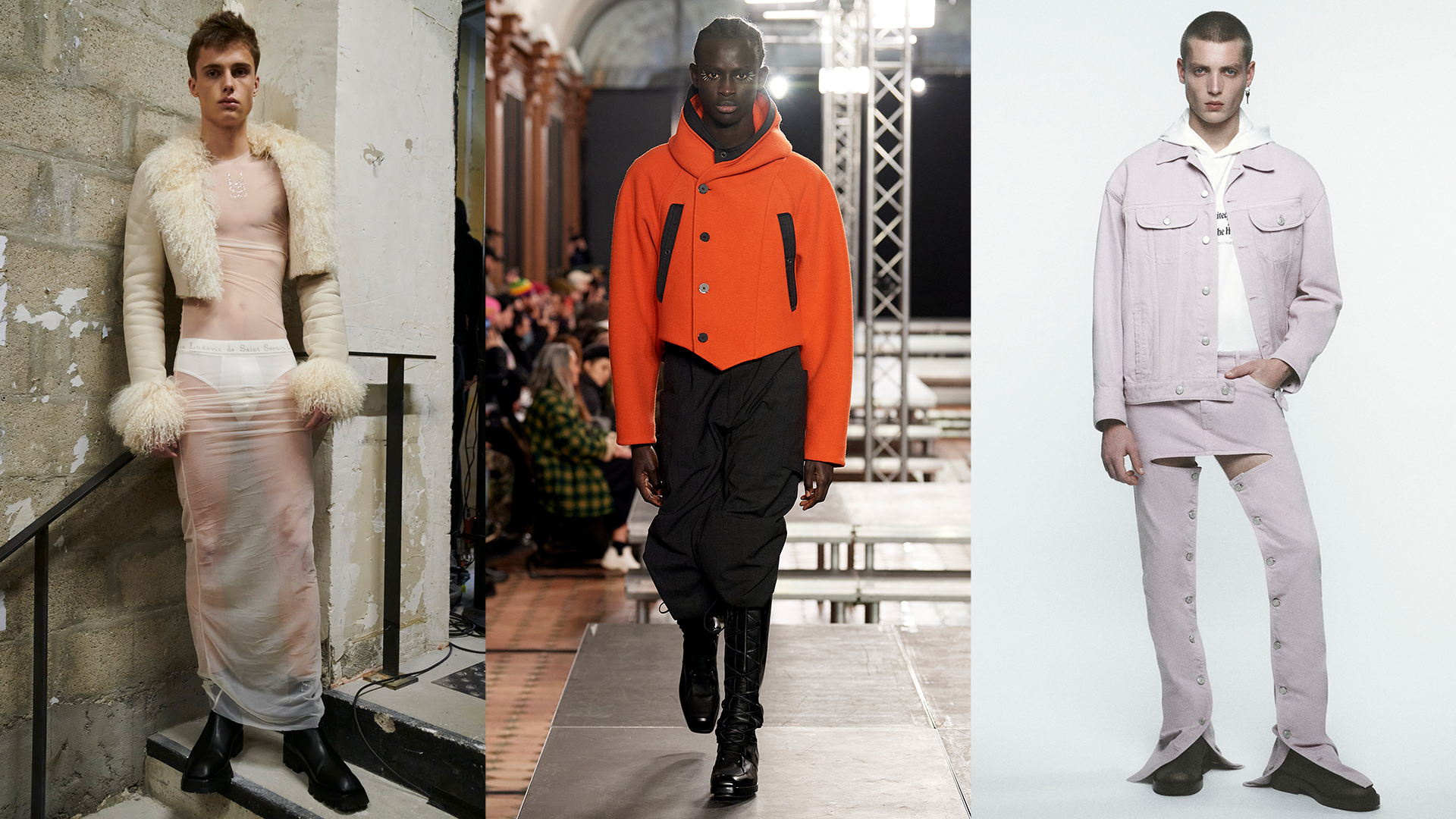Ah, mes cailles! Nous sommes enfin arrivés! Yes, that’s right, we’ve landed in gay Paree for the final leg – well, I guess there were only two legs this season, but whatever – of the men’s shows! As ever, it’s a season brimming with spectacles it would be criminal to miss, from Wales Bonner’s IRL debut on the schedule to the return of Saint Laurent and Ludovic de Saint Sernin; KidSuper’s show as a guest designer at Louis Vuitton to new collections from cult faves like Botter and Kiko Kostadinov. And we’ll be there to capture it ALL! For you! While we do the heavy lifting, running ourselves ragged around the City of Lights, all you need to check in here for all the latest tidbits from the world of menswear’s most stylish week. Bisous!
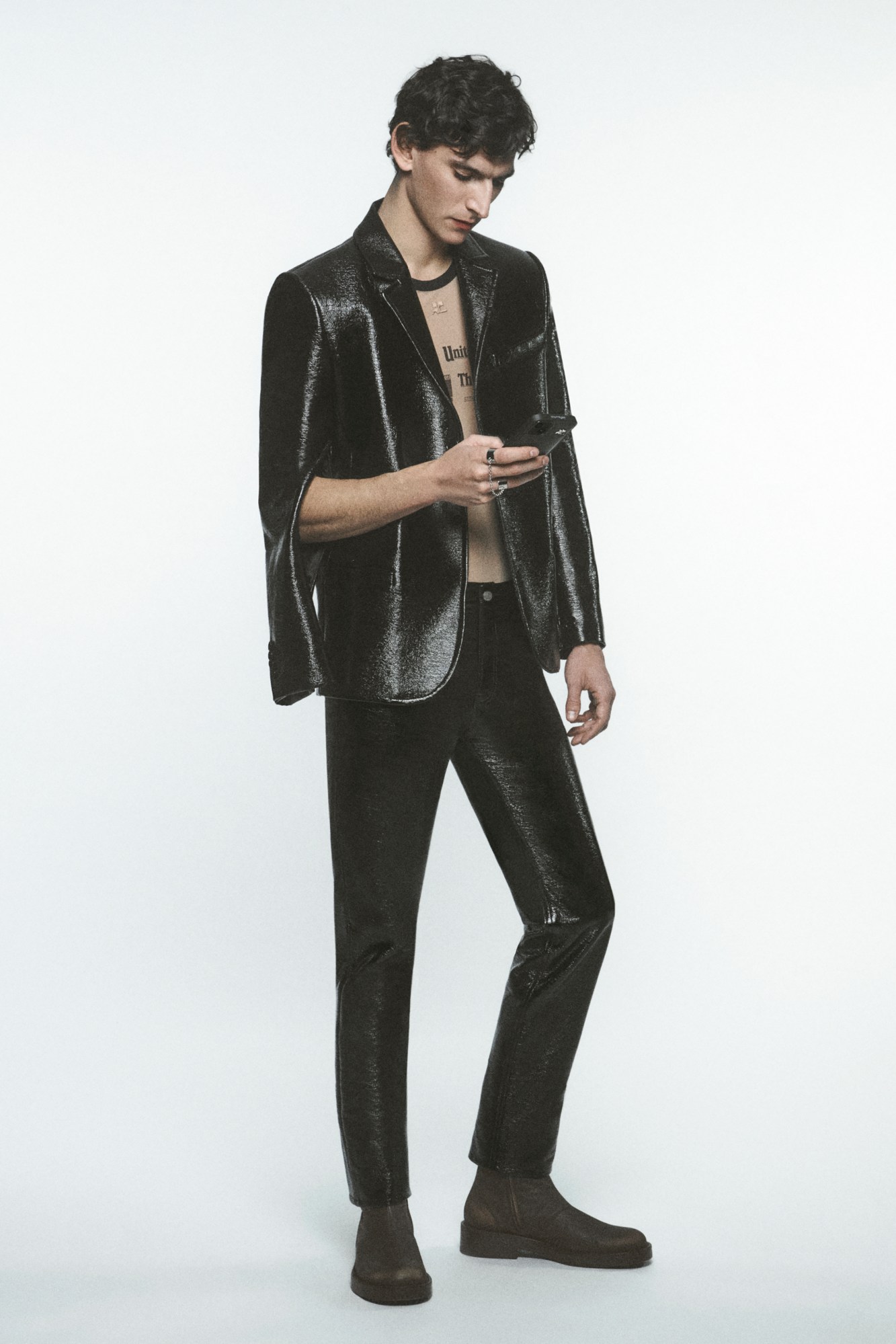
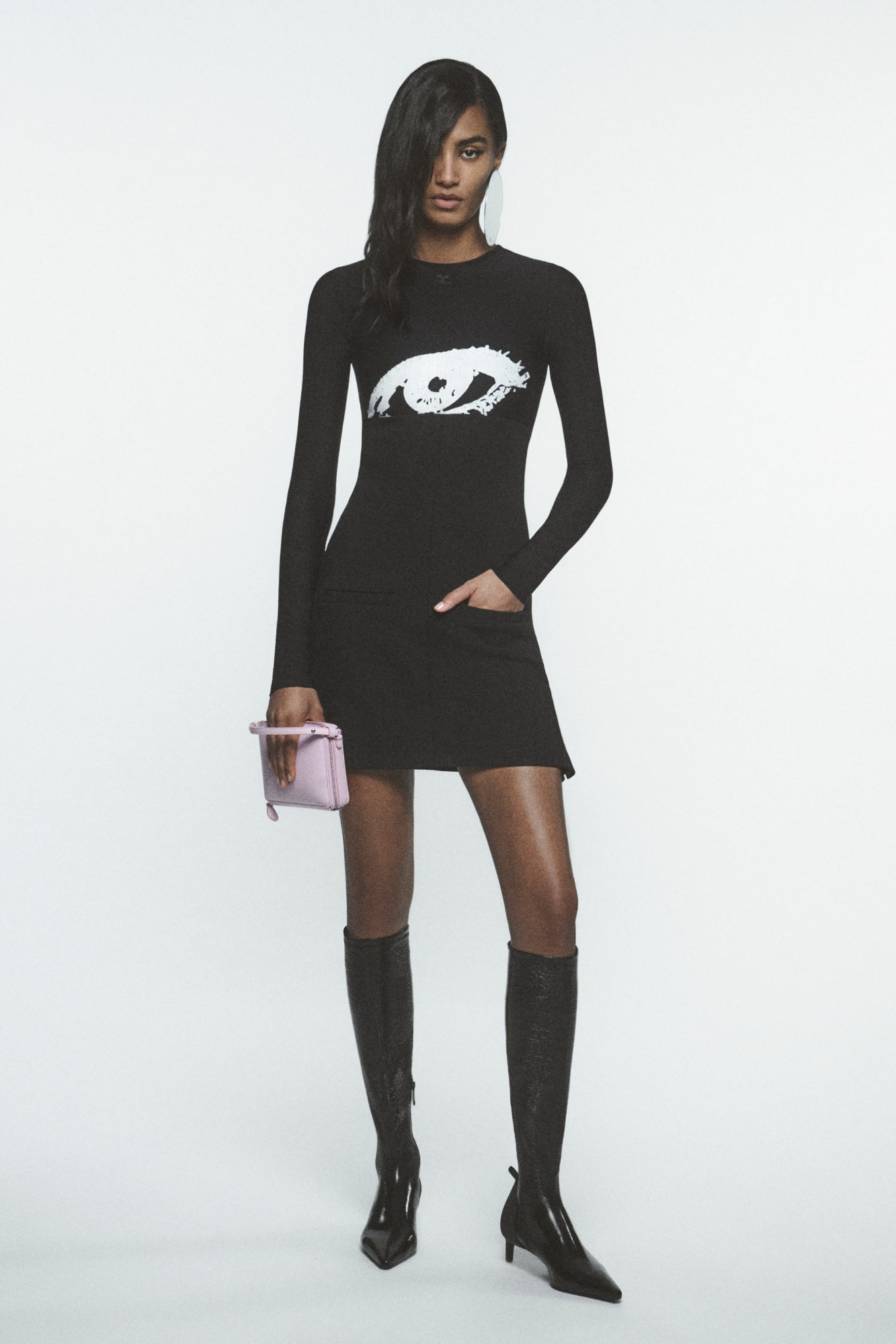
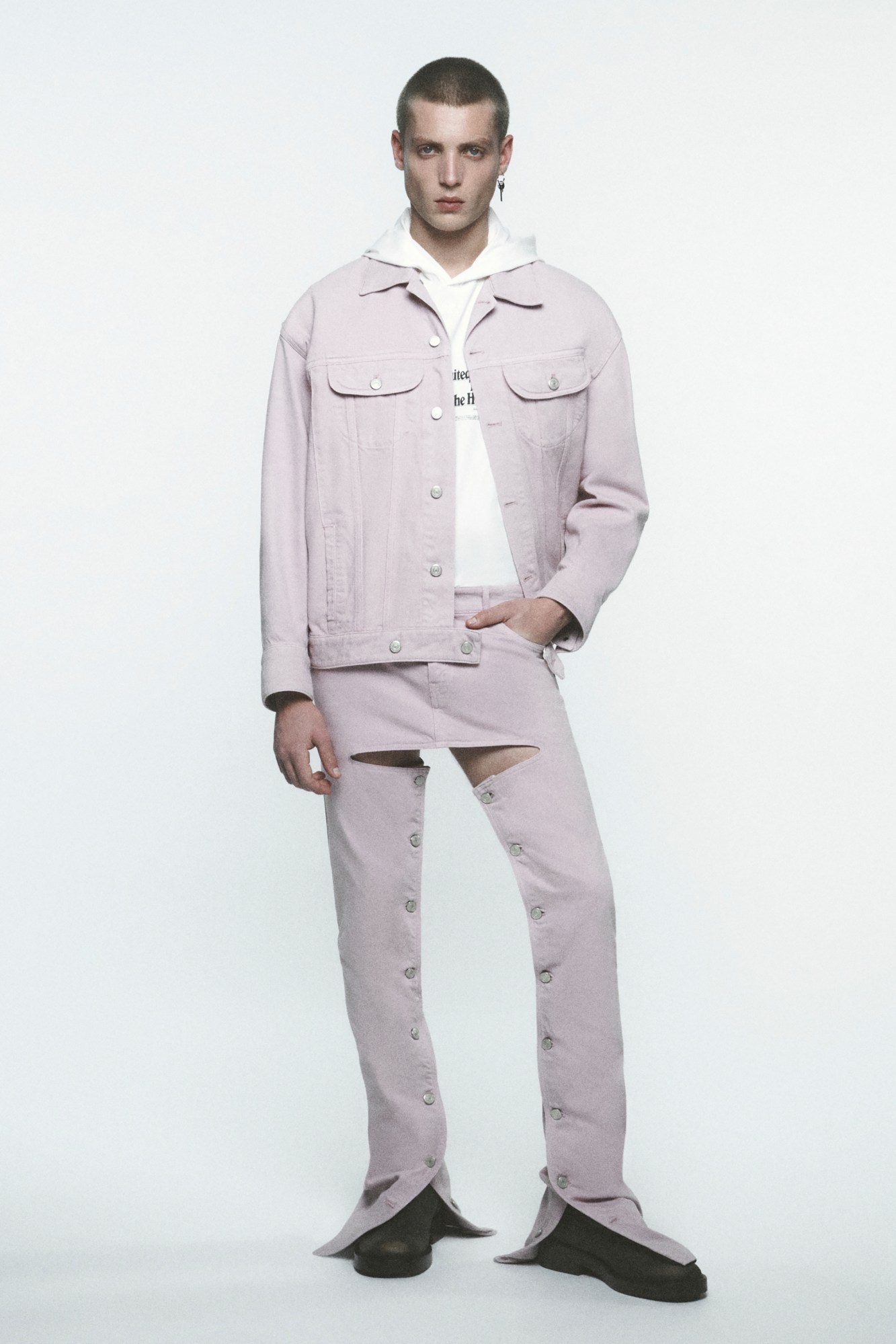
Courrèges
The Gen Z workforce is often perceived as unprofessional, underdressing for jobs and refusing to bow to the staunch and strict office etiquette upheld for decades while being so glued to their screens that their attention spans as short as the gaps between their notifications. But it is this generation of commuters and their spirit of rebellion against uniformity and the daily grind, and a refusal not to express themselves on their own terms, that inspires Nicolas di Felice’s AW23 collection for Courrèges menswear.
Across a Matrix-y futuristic collection hued in black, white, greys and candy floss pink – all then muted as if being viewed through the blue-light of a phone screen on dark mode (the constant setting of anyone below the age of 25’s phone of course) – The slashed sexiness we’ve come to expect from Nicolas was present here in defiant sharp tailoring. Knee-scraping skirts featured daring slits that revealed the thigh-high combat boots below. Blazers and jackets with inconspicuous zippers along the sleeves allowed arms to escape their crisp confines. Buttoned-leg rompers and trousers, both slashed at the upper inner thigh, created chap-like “mini skirt pants” while others came in a more slouchy bootcut fit, ready for either a 9 am meeting or the skate park. There were second-skin one-shoulder vests and dresses, the latter of which had a spaghetti strap hanging down on one side from a non-existent bra that refused to follow authoritarian workplace expectations and hide. Then there were voyeuristic eyes printed on to the tops and coats of models, perhaps a nod to our generation constantly being plugged into what everyone else is doing, sharing and posting. These were minimalist office wear staples for those who refuse to bend to prudish, uptight ideas of whether what you wear impacts your work. Whether HR will agree is another question. TG
Maison Margiela
There really is no designer working today on the level of John Galliano. He is — as Christian Dior said of Cristóbal Balenciaga, the “master of us all” — a master of seasonal metamorphosis, the Dickens of sartorial storytelling, the Da Vinci of technical construction. In fact, no designer has shaped the look of fashion on the catwalk — or the way that people dress in real life — more than Galliano, who helped blur the lines between pop culture and subculture. It’s why you’re probably scouring resale platforms for his earlier work. As the subject of the recent docuseries Kingdom of Dreams, as well as a feature-length documentary coming out next year, there is much reflection on his enormous impact over the years. But much of that focuses on way back when. What makes him a rarity in the pantheon of fashion gods is that he is still producing his best work today – at Maison Margiela, the fashion house he has called home for almost a decade. His work there is unparalleled. His only competition, it seems, is his last collection. Read our full review here. OA
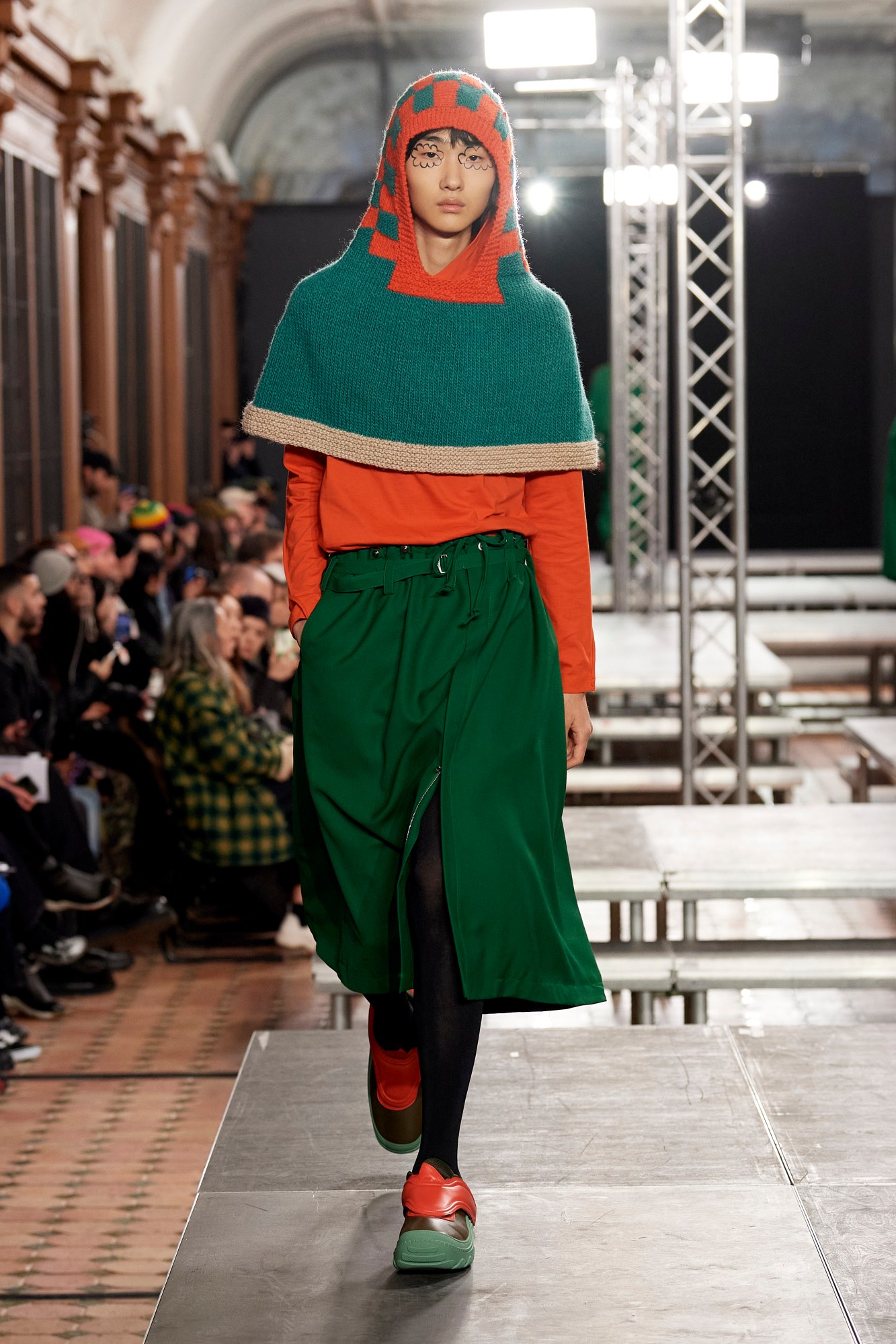
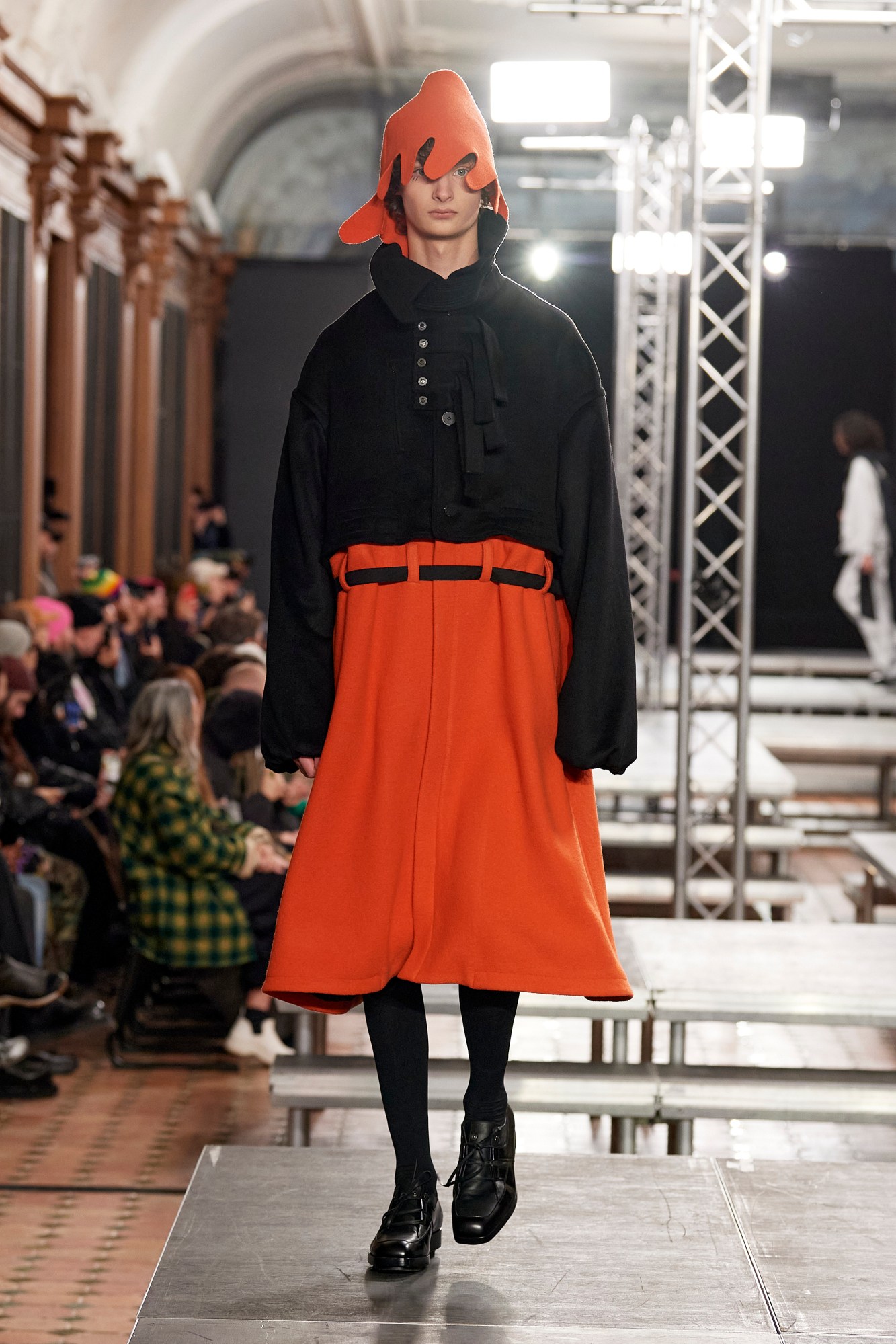
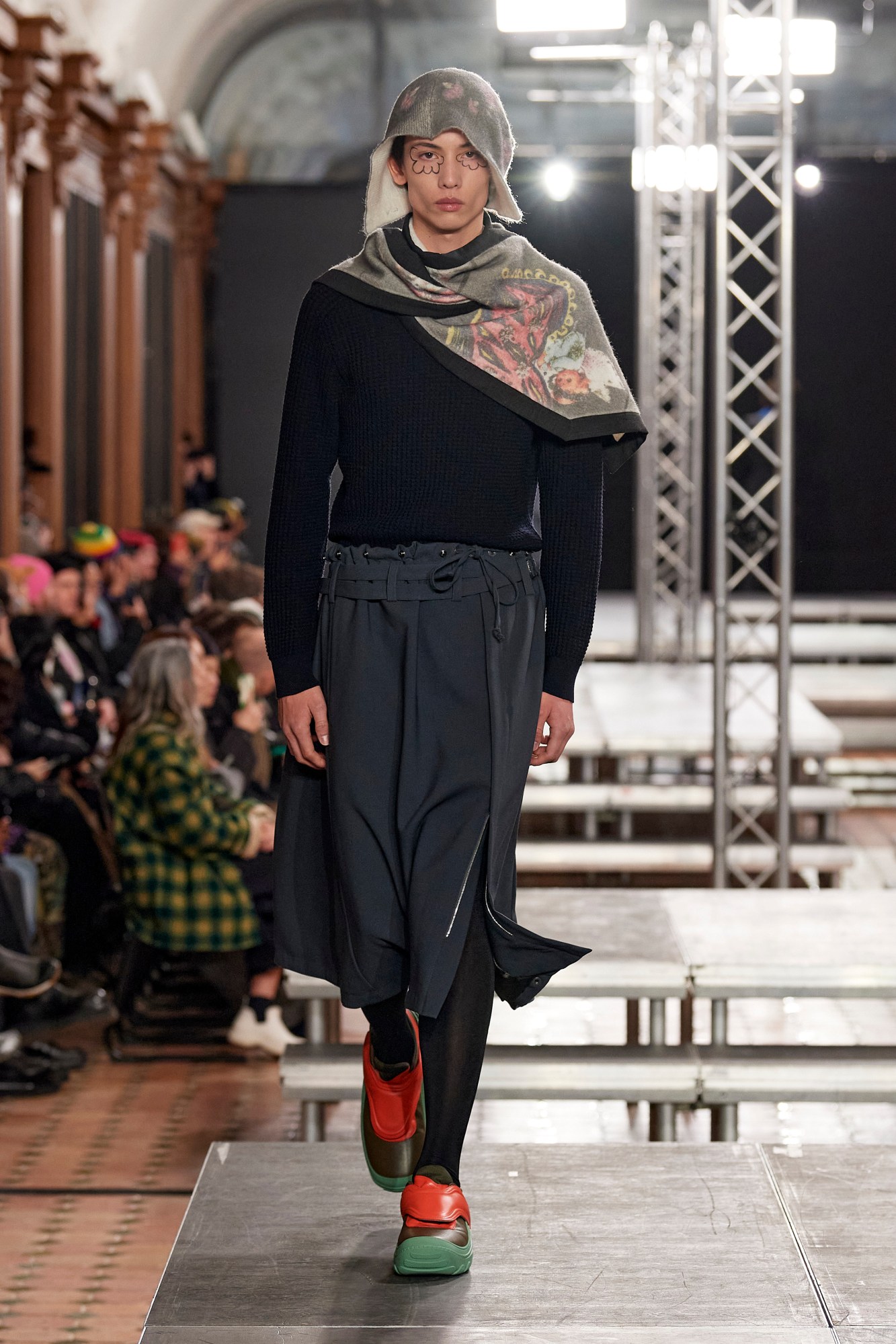
Kiko Kostadinov
Those who attended the 2018 Central Saint Martins MA show may have experienced a slight sense of déjà vu on seeing the clothes that Kiko Kostadinov presented last night in Paris in another scholarly setting – the library of the stately Lycée Henri IV. Though most will remember the show for the Duchampian paddling pool sent down the runway by Edwin Mohney, it was also in this show that the fashion show got its very first glimpse of the genius design sensibilities of Laura and Deanna Fanning, the twins who now head up Kiko Kostadinov womenswear. Granted, last night’s show was for the label’s menswear division – lead by Kiko himself – but nods to the girls’ graduate work – a faintly sporty, radically geometric assemblage of polychrome panels – made themselves strongly felt.
Looking to go beyond the discrete category of ‘menswear’, Kiko indeed looked to the slick collage work of Laura and Deanna’s earlier days for inspiration, alongside the work of a coterie of forgotten avant-garde womenswear designers: Anne-Marie Beretta, Krizia, Irene Lentz and the Sorelle Fontana. The results of his exploration were silhouettes that certainly felt looser, more laissez-faire, in their expression, and more expressive in their palette, too. Slope-shouldered wool jackets and coats were constructed with vivid contrasting slits at the underarm, the formality of their cut offset by checkerboard-knit hooded snugs and billowing belted skirts in jewel tones. An almost medieval air was evoked by bright, baggy trousers that tucked into lace-up knee-high boots, creating a breech-like form, as well as dusky cape-shouldered, button-down dresses. And there you have it – Kiko’s called it once and for all. Womenswear is menswear’s future! MS
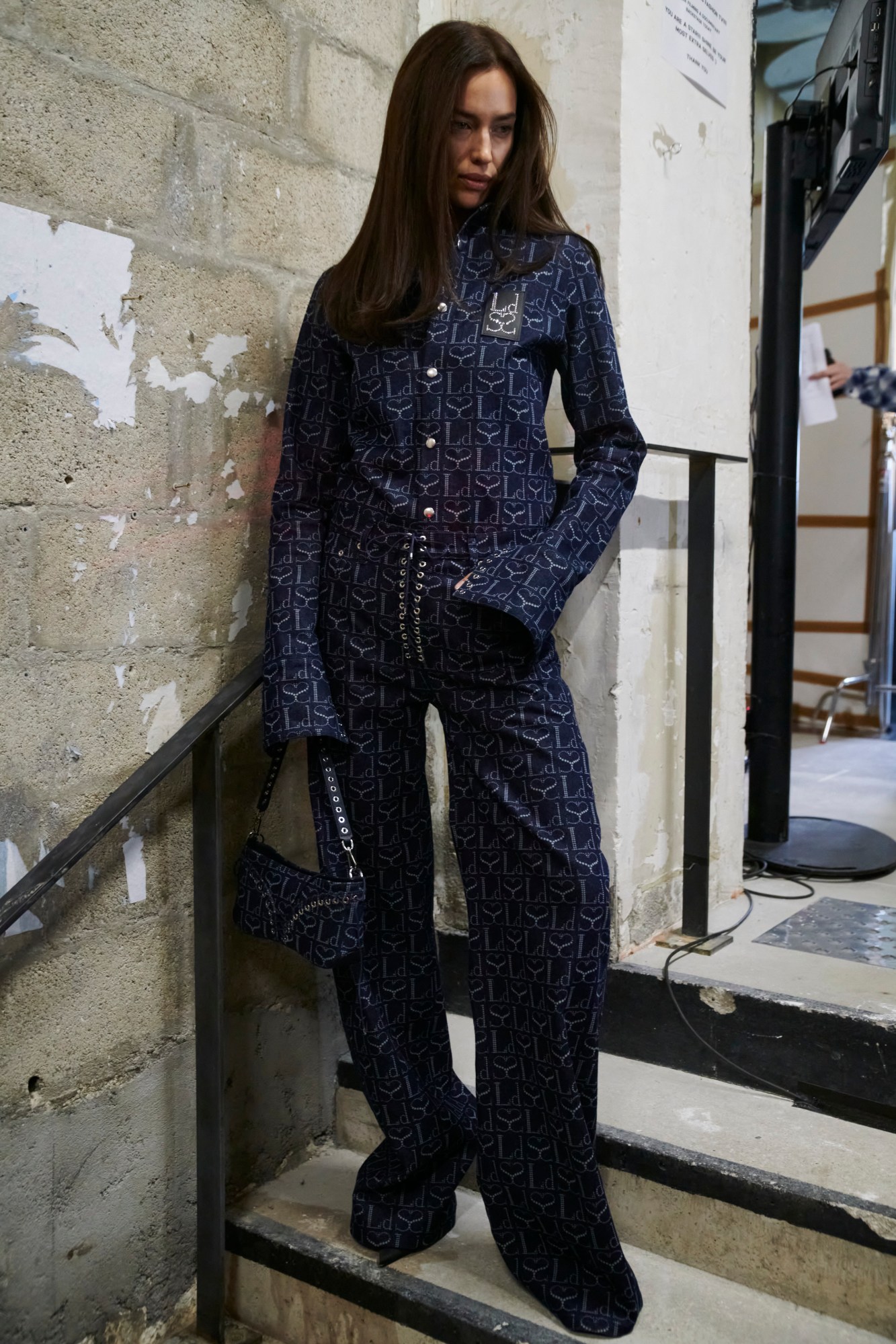
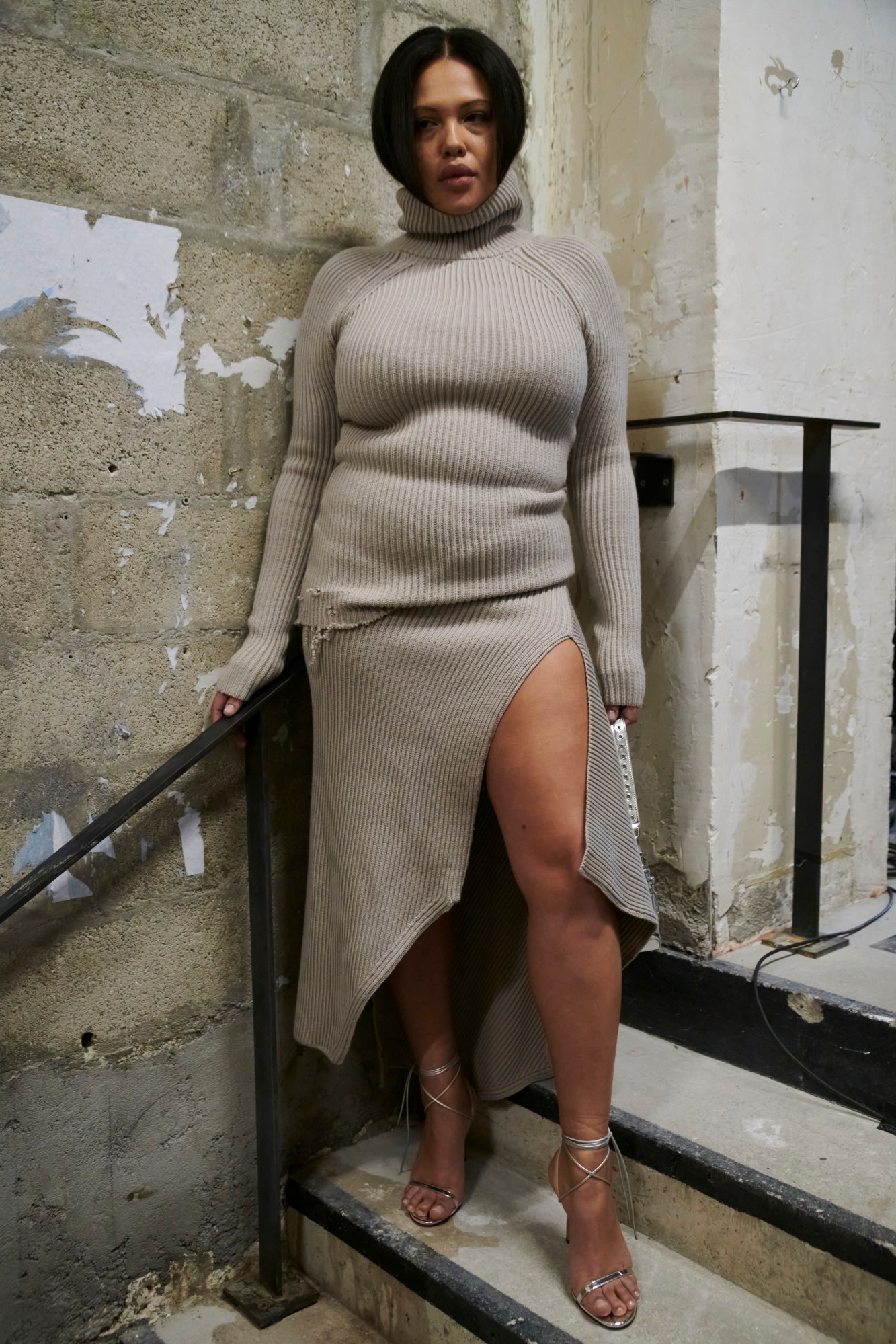

Ludovioc de Saint Sernin
Between his new gig as the head honcho at seminal Belgian house Ann Demeulemeester and his namesake brand, the ante really has upped for Ludovic de Saint Sernin. Now splitting his time between Paris and the new studio in Antwerp – and having made the decision to return to the menswear schedule for his latest LdSS show, bringing it forward by more than a month – the designer is frank in conceding that pulling his most recent collection was a pedal-to-the-metal job. Rather than a hindrance, though, Ludovic saw the snappy time frame as an opportunity – reminded of the high-pressure scenarios of fashion competition TV shows, he charged his atelier to design the collection as if they were set to show it to Michael Kors on Project Runway, breaking the 30-look collection down into a series of vignettes each based around a particular fabric.
A monastic capsule of black taffeta looks gave way to a quintessentially kinky set on similarly shadow-hued calfskin ra-ra skirts for boys and a new busty minidress silhouette. Denim featured throughout, either as roomy separates, eyelet briefs, bikinis and more laser etched with the brand’s monogram – an acknowledgement of the impressive journey that the brand has made in just five years – or as a shaggy ‘yeti’ treatment, the result of a painstaking process that sees individual threads teased out to create a shearling-like texture. Of course, it wouldn’t be an LdSS collection without some shimmer, a base that was amply covered by the passage of handkerchief-hemmed Swarovski mesh figure-skater’s skirts, as well as by crystal monogrammed second-skin tops and liquid column gown. If we were fashion show judges (which I guess, in a way, we are), this would be a surefire contender for our winner of the week.
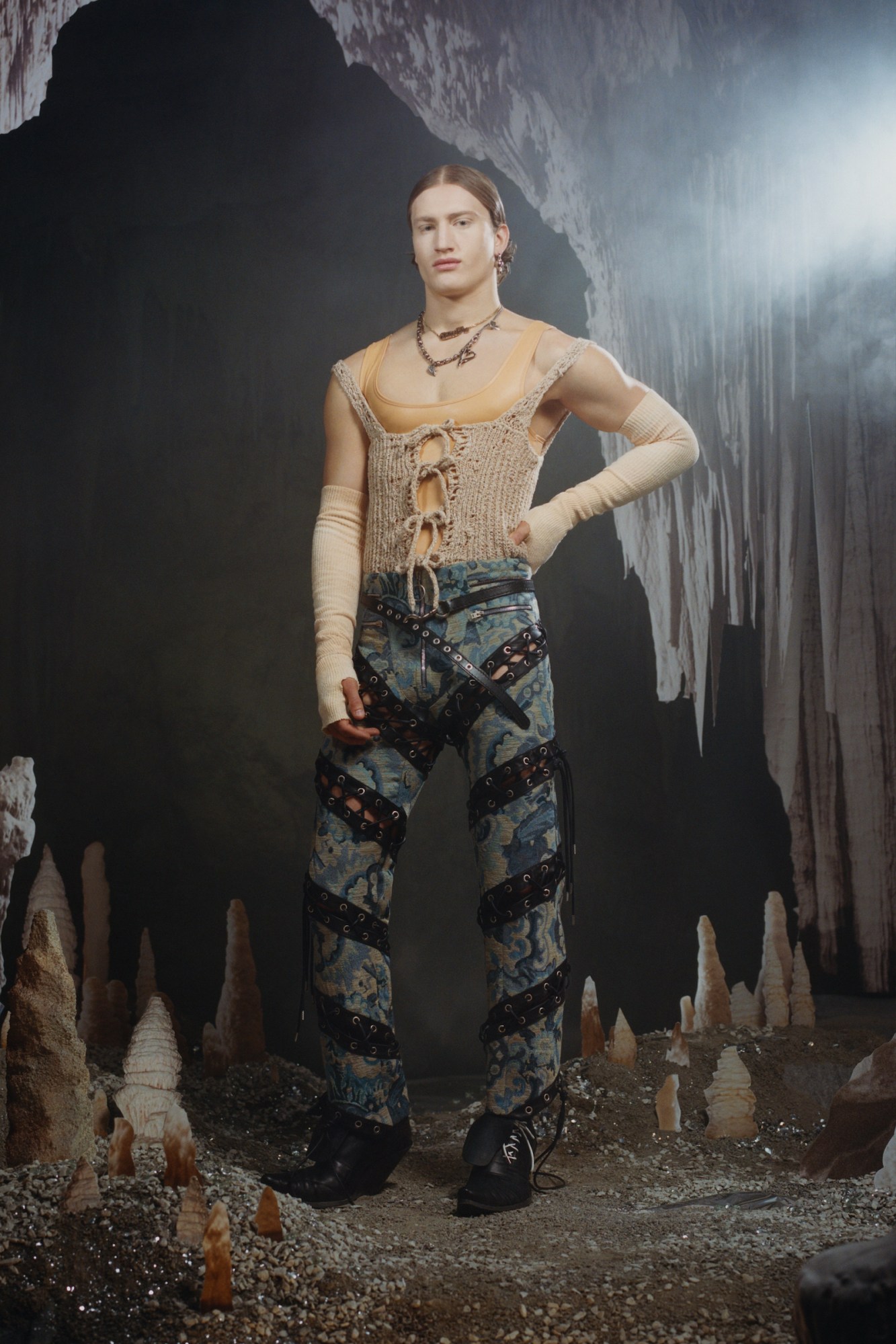
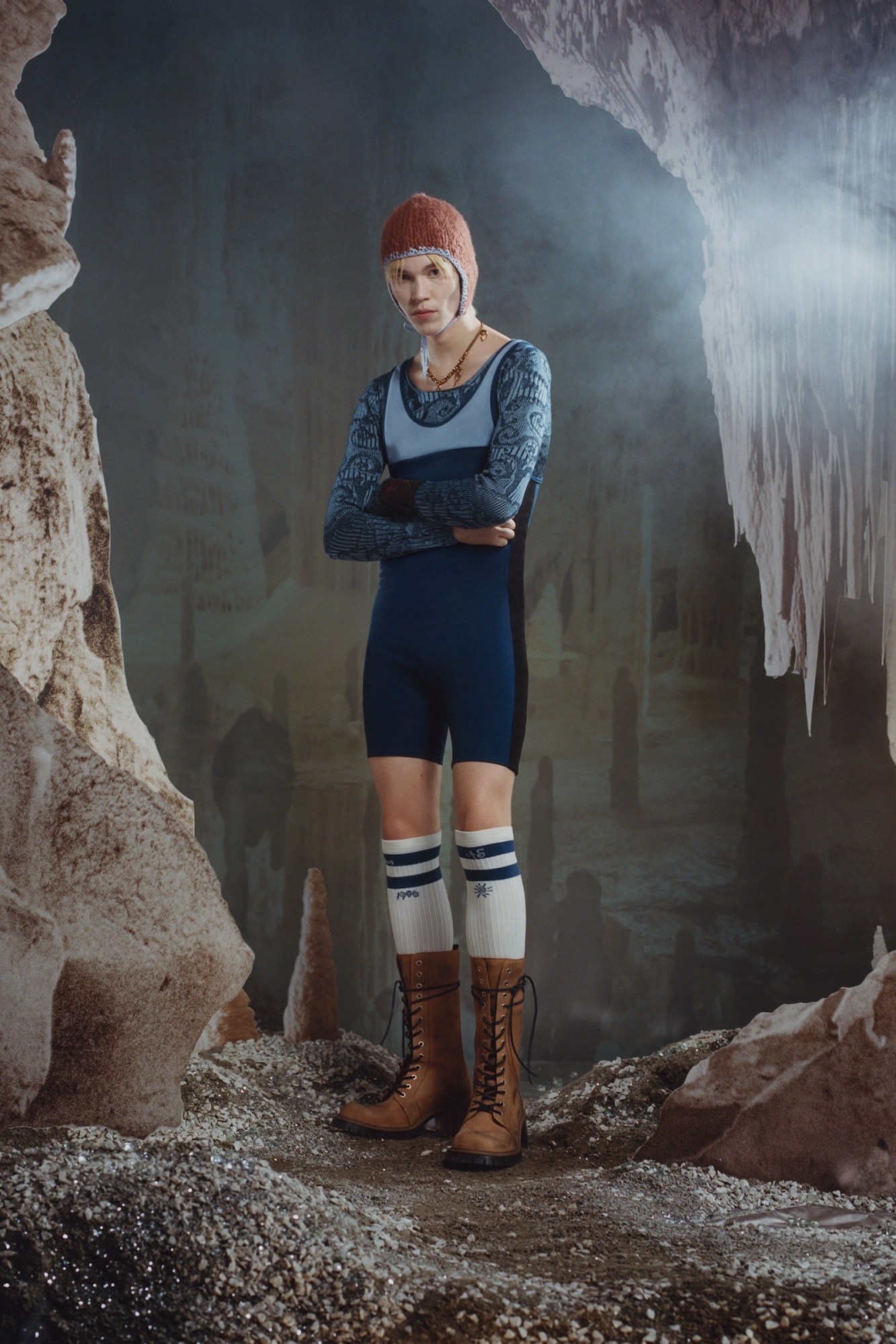
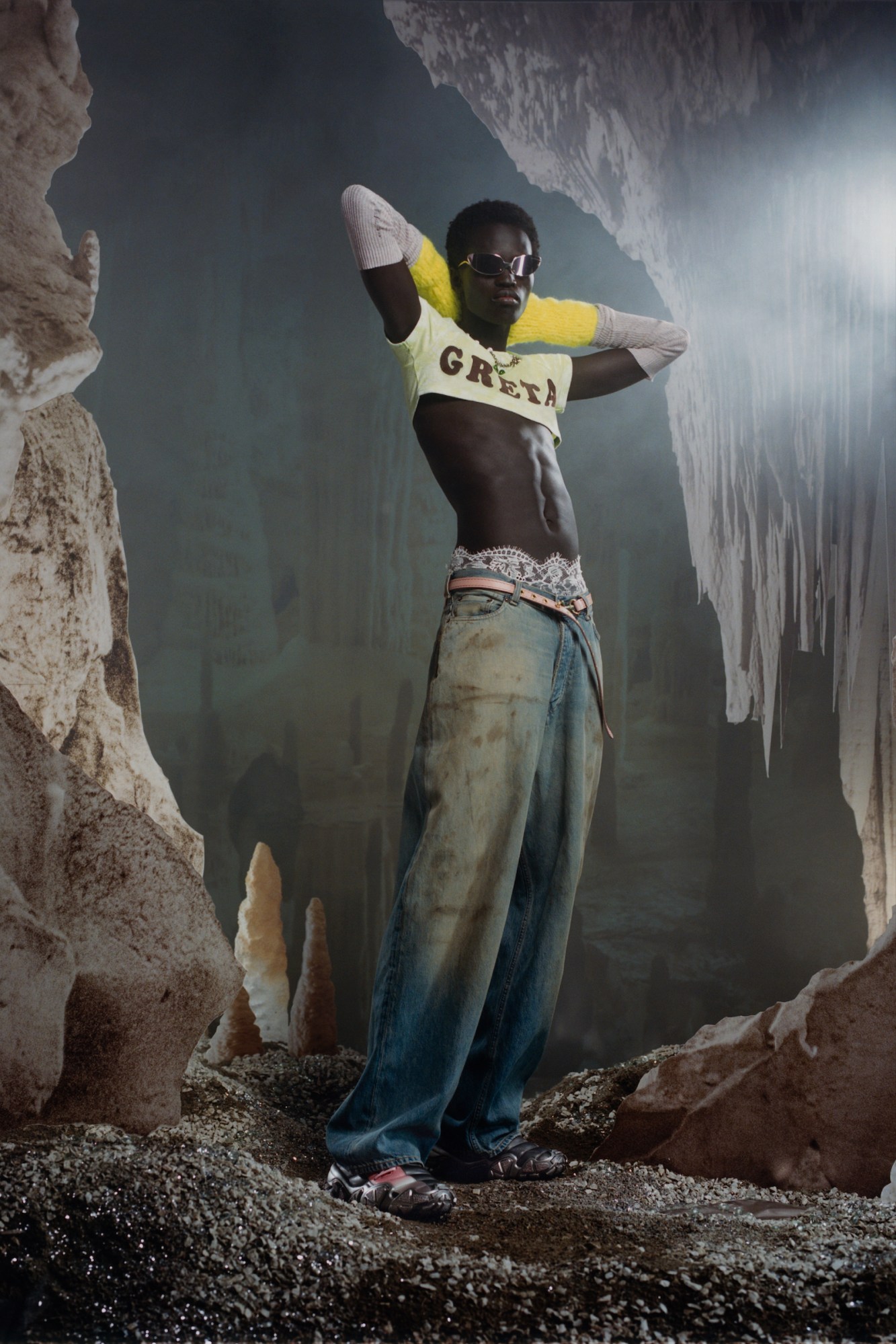
Acne Studios
In apocalyptic movies, whenever characters are forced into a new future where disastrous events spur the natural world to regain control, they all often revert to strict gender roles. But for Acne Studios AW23 collection, Jonny Johansson imagines a different uber-male, taking clichés of masculine dress across generations and pairing them with ultra-feminised materials, cuts and detailings. “I’ve been thinking a lot about the masculine baggage that we drag along as guys, boys, men and I wanted to explore it for fall,” the creative director of the Swedish brand says about his latest offering. “I felt inspired by the new man, the new way of looking at things, and by men who can show vulnerability aesthetically. I was intrigued by the thought of a caveman being the most masculine thing and I used that as a contrast.”
Showcased against the backdrop of a misty, Jurassic-era cave, our survivors in this danger-filled world wore knee-high football socks and heeled combat boots (some painted with floral foliage) with earthy-toned tube dresses or skin-tight mesh long-sleeves under lycra wrestling singlets. Incredibly cropped baby tees were paired with oversized low-rise trousers that, like many of the looks in the collection, revealed the waistband of lace lingerie briefs underneath. Acid wash jeans and denim jackets were either held together by BDSM-y laces or patched with plaid shirting, like they were DIY made from whatever found materials were available, and piece that would usually act as protection – gloves, knee pads and headgear – were softened in cosy knits. Then there was evening wear – cinched pinstripe trousers, sumptuous wool coats and sharp suiting made casual – paired with rhinestoned musubi bags, heeled soccer boots and tie-front camisoles. All in all, it was an joyfully emancipated vision of masculinity – one that found power in daring self-expression, and in looking past the gendered histories of the garments and materials at hand. TG

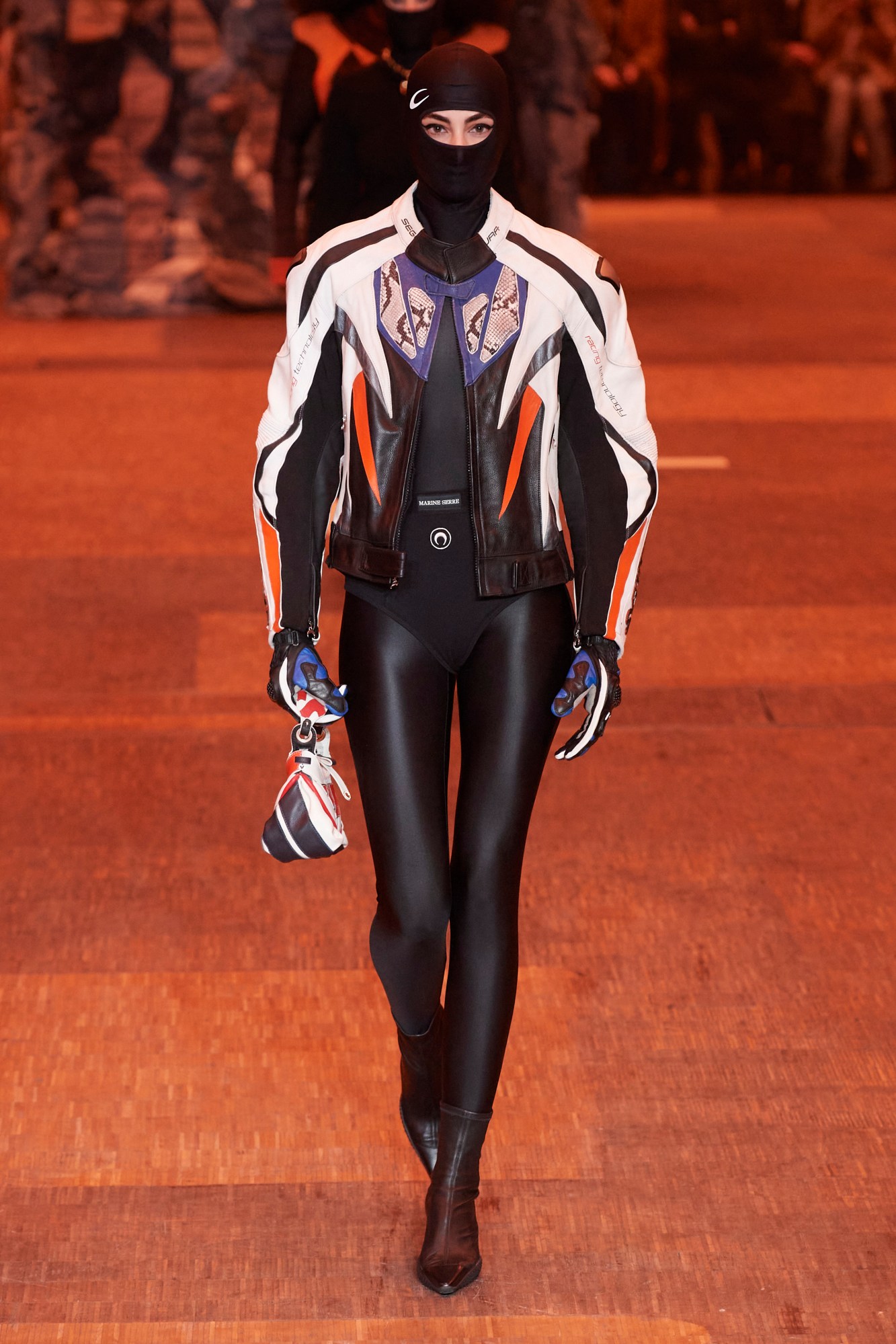
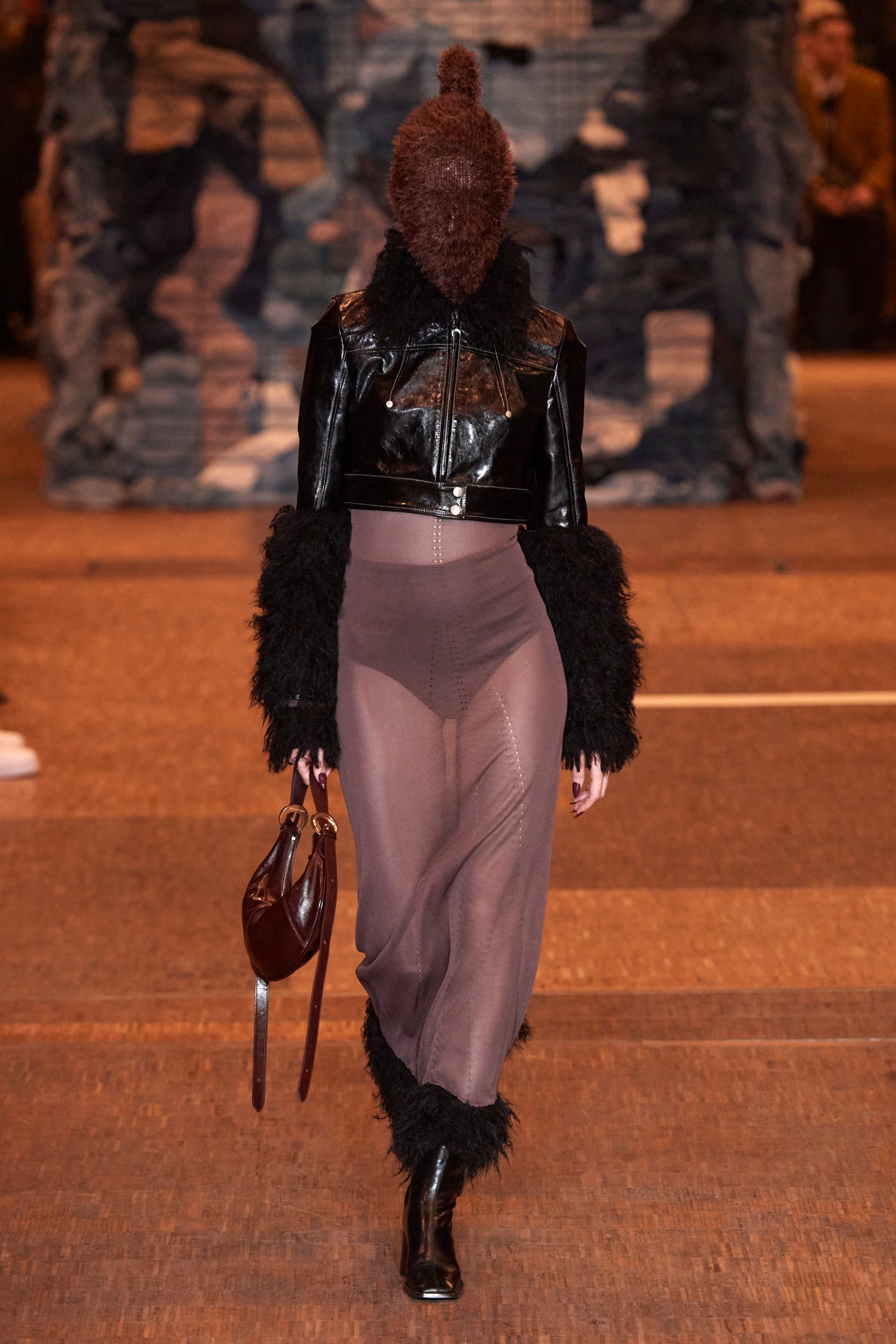
Marine Serre
In times that feel as goddamn apocalyptic as they currently do, we can think of few designers better placed to comment on the dreary state of affairs than Marine Serre. True to form, in the latest show for her namesake house, a powerful comment is exactly what one of the fashion industry’s most committed environmentalists delivered. Staged in the cavernous halls of La Villette, in the north of Paris, around 3 looming towers built from the deadstock garments Marine stores in the brands’ warehouse facilities, attendees were immediately confronted with the grim reality of fashion’s waste habit.
The intention of this exercise, however, was not to expressly condemn, but rather to remind viewers of the dormant potential that lies in what we so flippantly discard and disregard – a message that, as bleak as the global circumstances at hand may seem, there are still opportunities to salvage the situation. The zero-waste clothes we saw on the runway were a testament to this optimistic ethos, many of which were, in fact, fashioned from the same types of pieces seen in the imposing towers. Formal shirts, cropped blousons and sweeping macintosh coats were regenerated from cotton tote bags, and corsetted denim dresses were decorated with jangling crescent-moon-embossed plates. Motocross leathers were refashioned into a svelte, strapless gown and regenerated nylon yarns were used to create the monogrammed jacquards seen in tailored trousers and trench coats, as well as the brand’s signature shimmering moiré. While the impetus for Marine’s design practice may be the imminent climate crisis, and the need for collective action to hinder it, what makes her work stand out is the optimism that permeates the message – the reminder that the actions that we need to take are well within grasp, and that we can all still look damn great taking them.
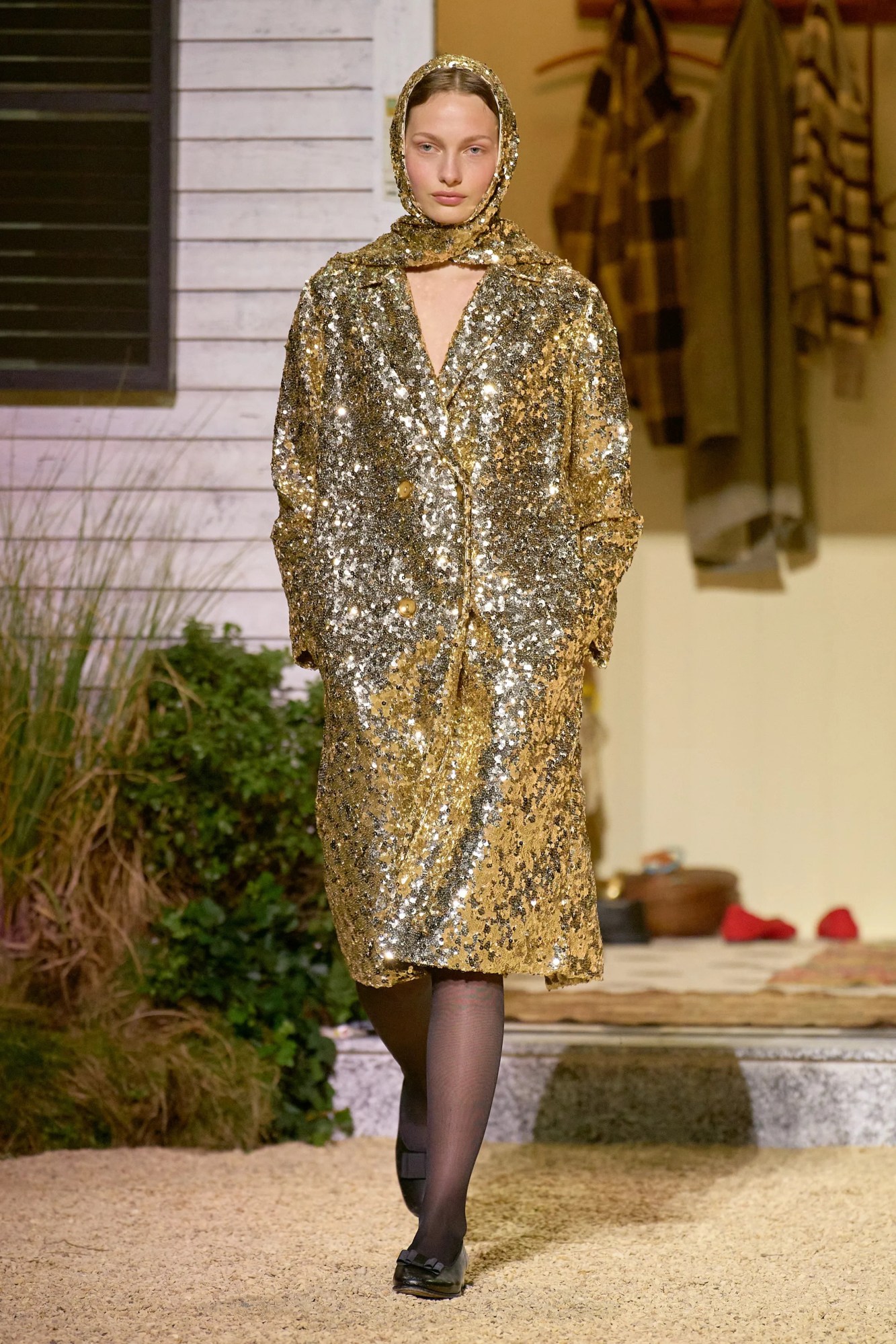
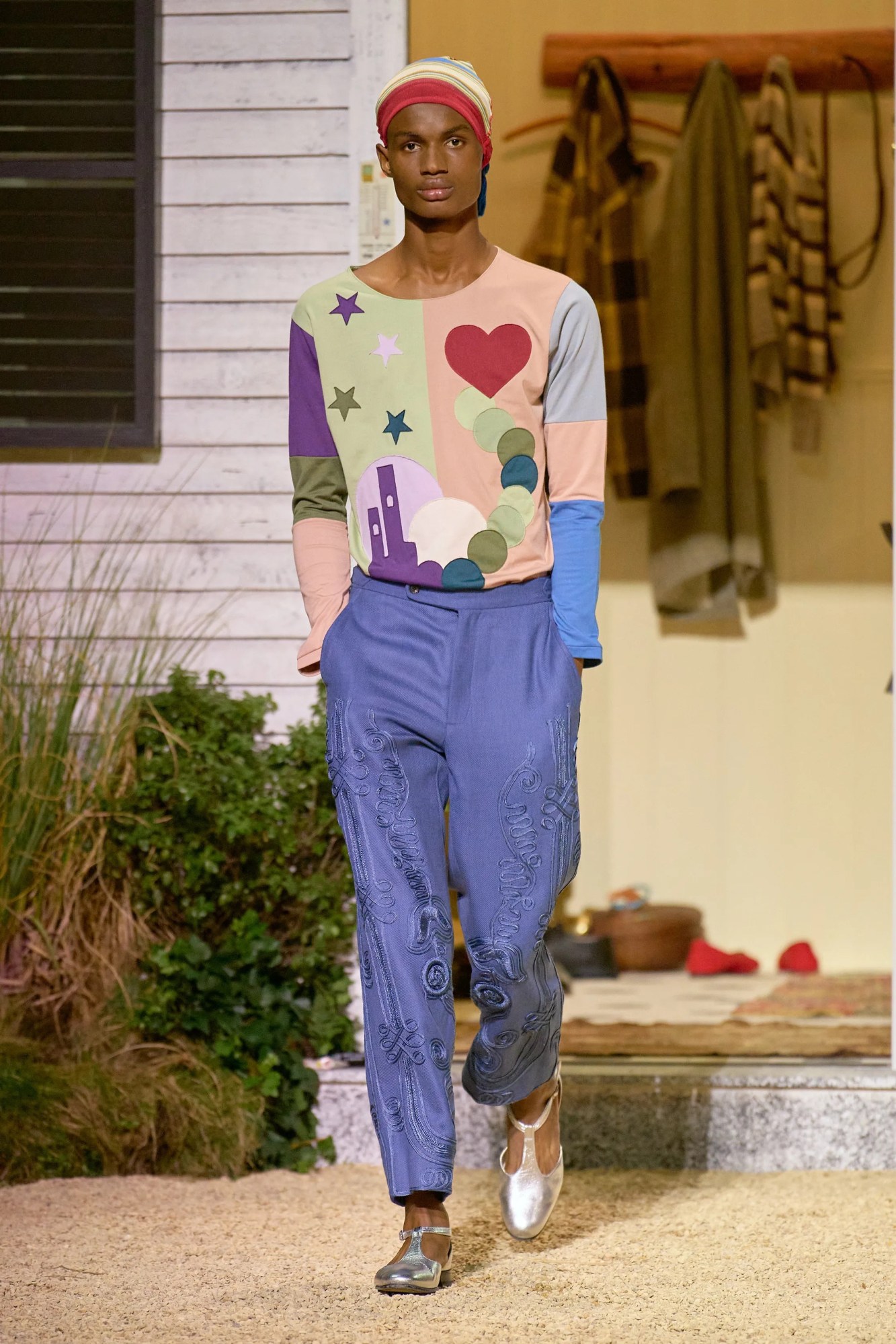

Bode
This season has been pretty light as far as debuts go, but if there’s one – alongside Wales Bonner – that we are all hotly anticipating, it was of course the long-awaited arrival of Emily in Paris. No, not that Emily – we’re talking about Emily Adams Bode Aujla, the name behind cult American label. To make its mark, the brand took to one of Paris’ most revered stages – that of the Théâtre du Châtelet – to present what felt like an elevated ode to a nostalgic vision of the designer’s homeland. Strolling out from a whitewashed coastal house, models sported garments that riffed on the spirit of hearty –at times novelty – Americana that has fuelled the brand’s appeal –a Western-ready fringed tan leather blazer; a flapper-ish spaghetti strapped shift dress in wide-gauge gold lurex knit; a cropped carcoat patchworked from hand-embroidered quilts; and even a tiered pine green chiffon dress bedecked in baubles and candy canes like a Christmas tree. Expected as these endearingly campy twists were, what really gave the collection its merit were looks that exhibited a more restrained, quietly confident chic – like a silk velvet dinner suit with frogging closures and delicate floral embroideries, stately tailored wool capes and slimline coats, and a gold lamé midi dress, its demure silhouette enlivened by the sparkle of the chosen material. Though Emily Cooper may have had a tough time convincing the French with her style choices, looking at this, Emily Adams Bode Aujla mission is sure to pass off without a hitch.
Loewe
What purpose does a fashion show serve? That’s been the big question this week as menswear shows in Milan and Paris, once the quieter and slightly more discrete alternative to womenswear, have exploded into almighty productions with all-star audiences and thousands of screaming teenagers braving the sub-zero chill, eager to get a glimpse of their favourite K-pop stars. For Loewe’s Jonathan Anderson, however, a fashion show is still a “laboratory” — especially, when it comes to menswear, which can still feel coded and restricted, even if skirts have become the norm. Jonathan described menswear, which he studied and started his namesake label with, as “an exciting platform to remain a method of trialling things”. His latest show for the Spanish fashion house was a delightful antidote to what has become the norm in fashion in general: brands aiming to double down on growth through logomania, megabrand collaborations, excessive styling, and megastar ambassadors. It has felt, at many shows, as if we’re in an ever-inflating bubble about to burst… Read the full review of one of the shows of the season here.
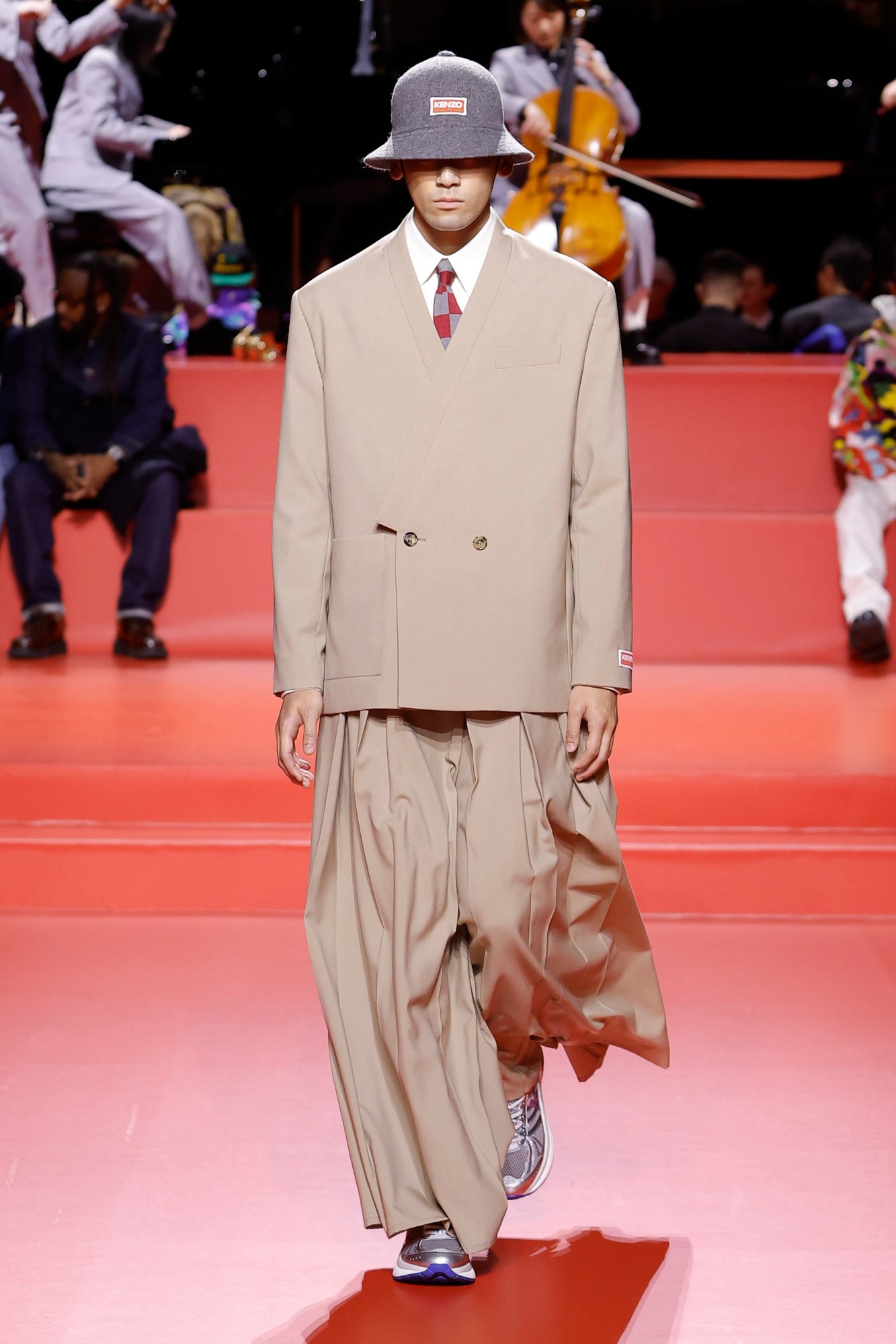
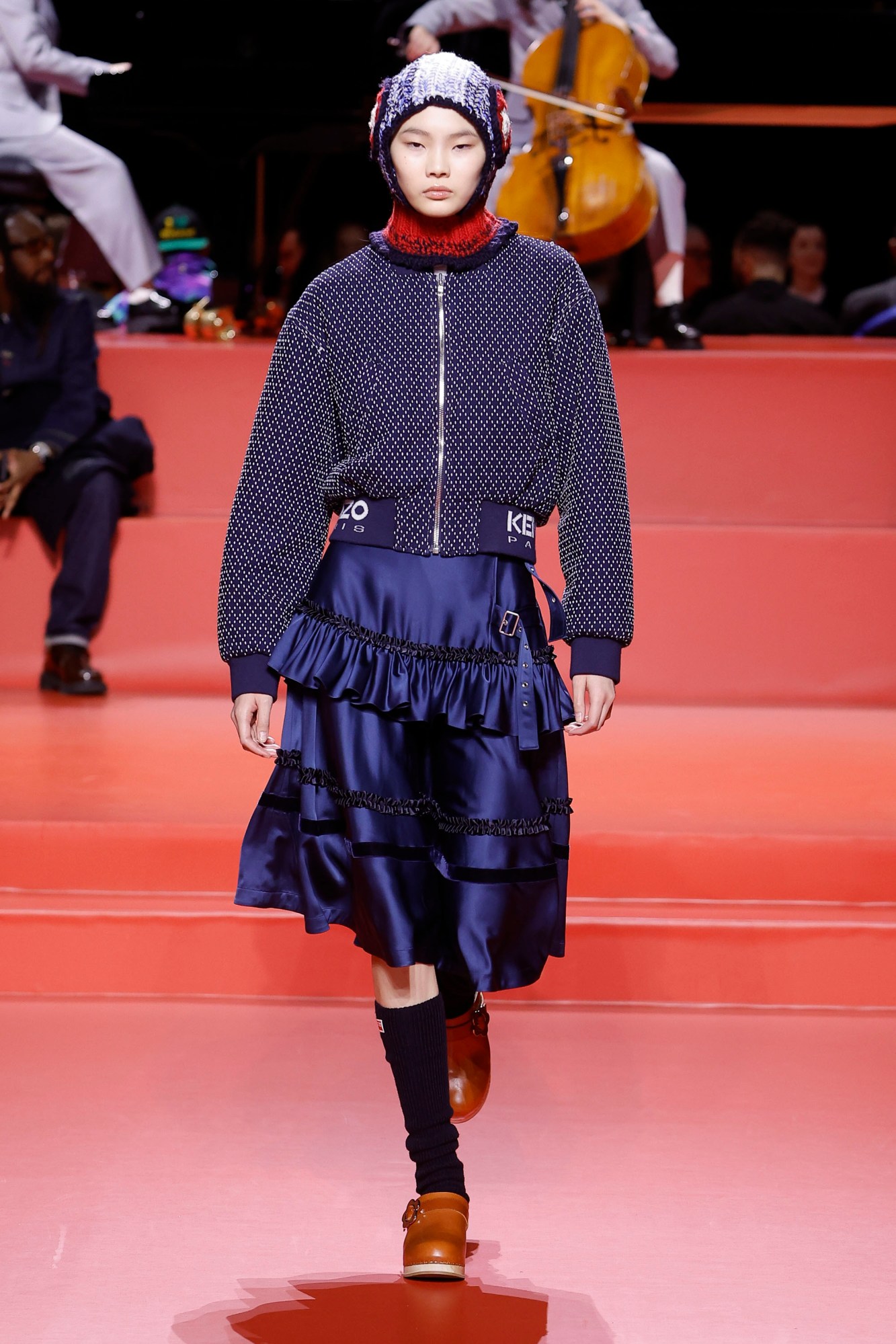

Kenzo
Known as one of streetwear’s foremost pioneers, the remit of Japanese designer Nigo’s creative vision is almost unfathomably broad, bringing in influences as varied as American workwear, martial arts outfits and delicate fabrications native to his homeland, and even British outdoor gear. At the base of it all, though, is an obsession with painstaking garment construction – a fact well attested to by his well-documented Savile Row suit habit. His most recent collection for Kenzo was a testament to his genre-irreverent – yet ultimately strictly executed – approach to fashion.
Clean, mod-ish suit jackets – debrided of collars and lapels – were counterposed by the billowing pleated wool trousers, and prim striped poplin Oxford shirts were worn under wide-sleeved fleece kendo jackets trimmed with sashiko embroidered bands of fabric. Elsewhere, the speckled traditional Japanese fabric was used to fashion a cropped varsity jacket, with this all-American college-dress sensibility echoed in an abundance of campus graphics and a Cher Horowitz-y cropped plaid skirt-suit. Archetypal cargo-pocketed workwear garments were reimagined as beige cotton drill miniskirts and abbreviated jackets, and hearty Fair Isle knits were rendered in poppy lurex yarns. All in all, it was a testament to Nigo’s unique, global perspective on fashion – on its ability to serve as a world-unifying language we can all understand.
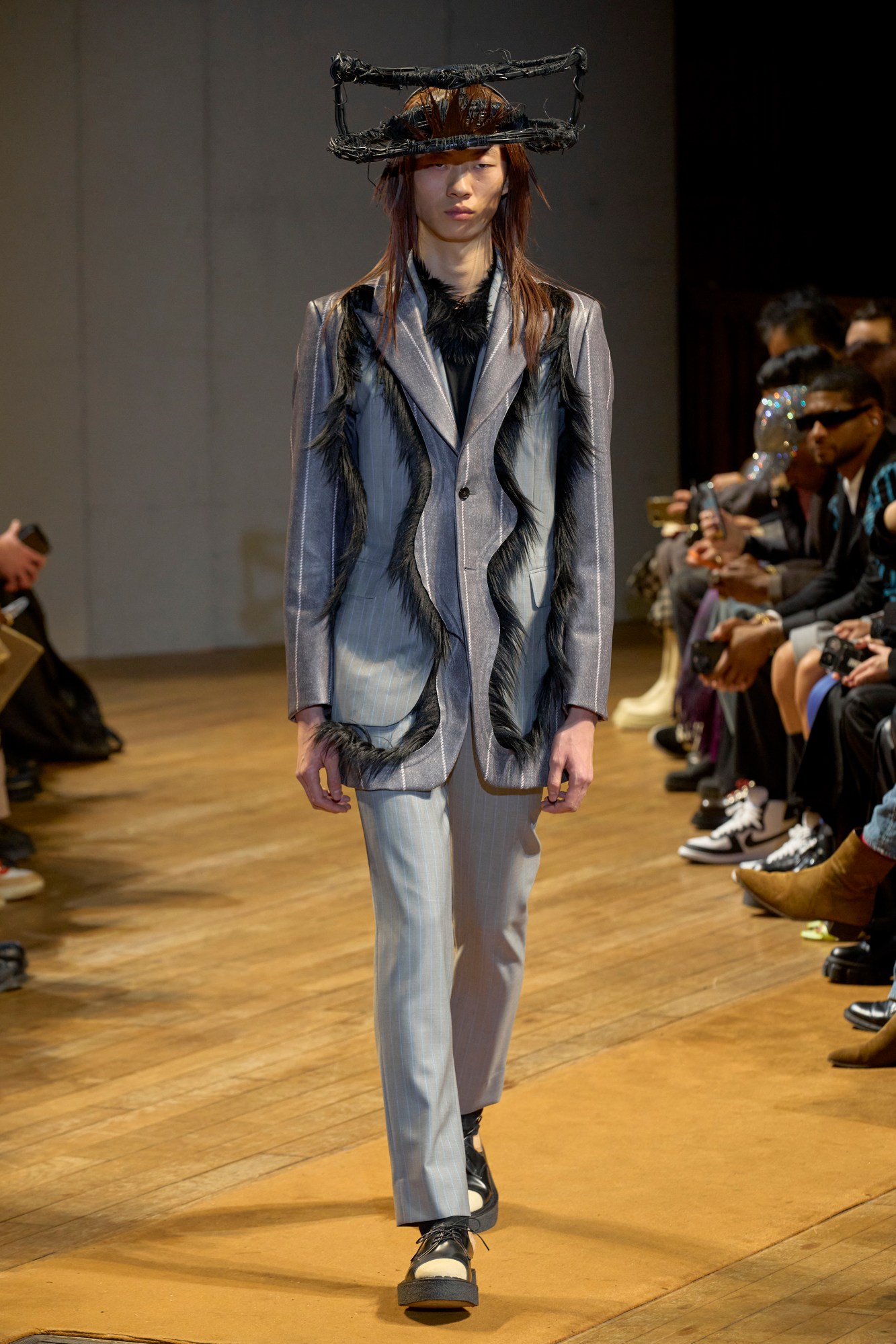

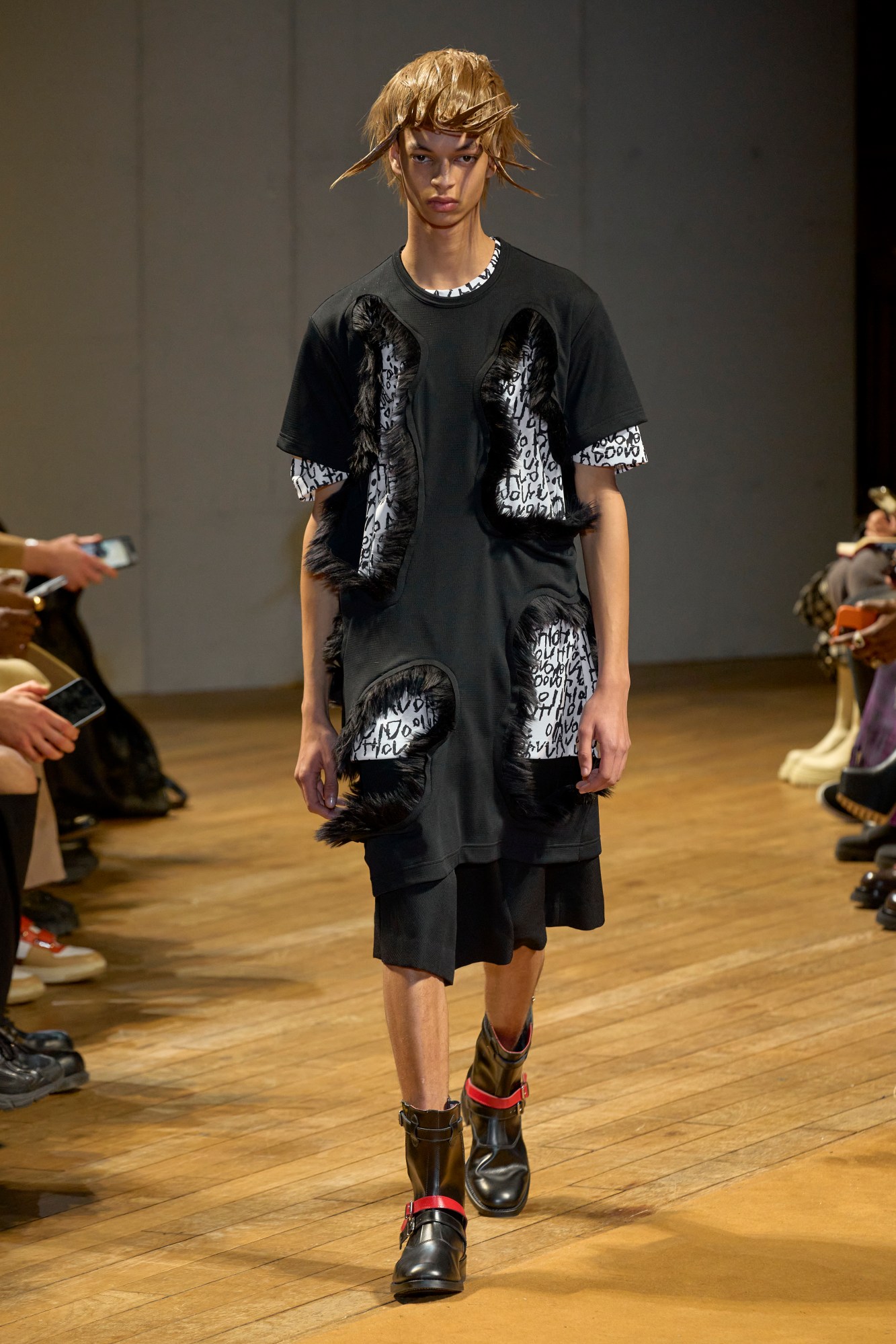
Comme des Garçons Homme Plus
Among the paradigm shifts we’ve seen take place this men’s month, perhaps the most notable is the widely-witnessed turn from more extravagant, speculative fashion – clothes that pushed at the boundaries of what men could (and should!) wear –towards more sober, familiar territory. It’s a fact well proven by the abundance of generous, louche tailoring that we’ve seen storm the runways over the past few weeks – much of which has been exquisite, mind you, but hardly groundbreaking. This season, Rei Kawakubo was among those to broach tailoring as a theme – though, of course, hardly in any way you could have expected.
With “Tailoring of the Avant-Garde” as its thematic impetus, the legendary Japanese designer presented a parade of bombastic silhouettes that unpicked notions of the craft at seams, and reassembled them at dramatically scaled proportions. Rather than enhance the wearer’s natural body, hulking wool waistcoats with dramatic pagoda shoulders cut scarecrow-like figures, worn over jackets and culottes of a more conservative cut in camouflage brocade and raw English tweed; slim, notch-lapelled suits in POW check came with swollen breast panels – echoing Kawakubo’s 1997 masterclass in bodily distortion, “Body Meets Dress, Dress Meets Body” – and scrawled with eerily familiar, yet ultimately indecipherable symbols by London-based artist Edward Goss.
What appeared to be amply cut blazers in lurid plaids were, in fact, denuded of their sleeves, turning them into immaculately crafted, button-down ponchos. Elsewhere, this act of subtraction was made up for in the suite of Melton wool and polished calfskin jackets that had surplus, trunk-like sleeves sprouting from the chest. In times when it feels like fashion is starting to slump a little lazily towards familiarity and tradition, thank goodness that we still have designers like Rei Kawakubo unafraid to step in and shake things up. MS
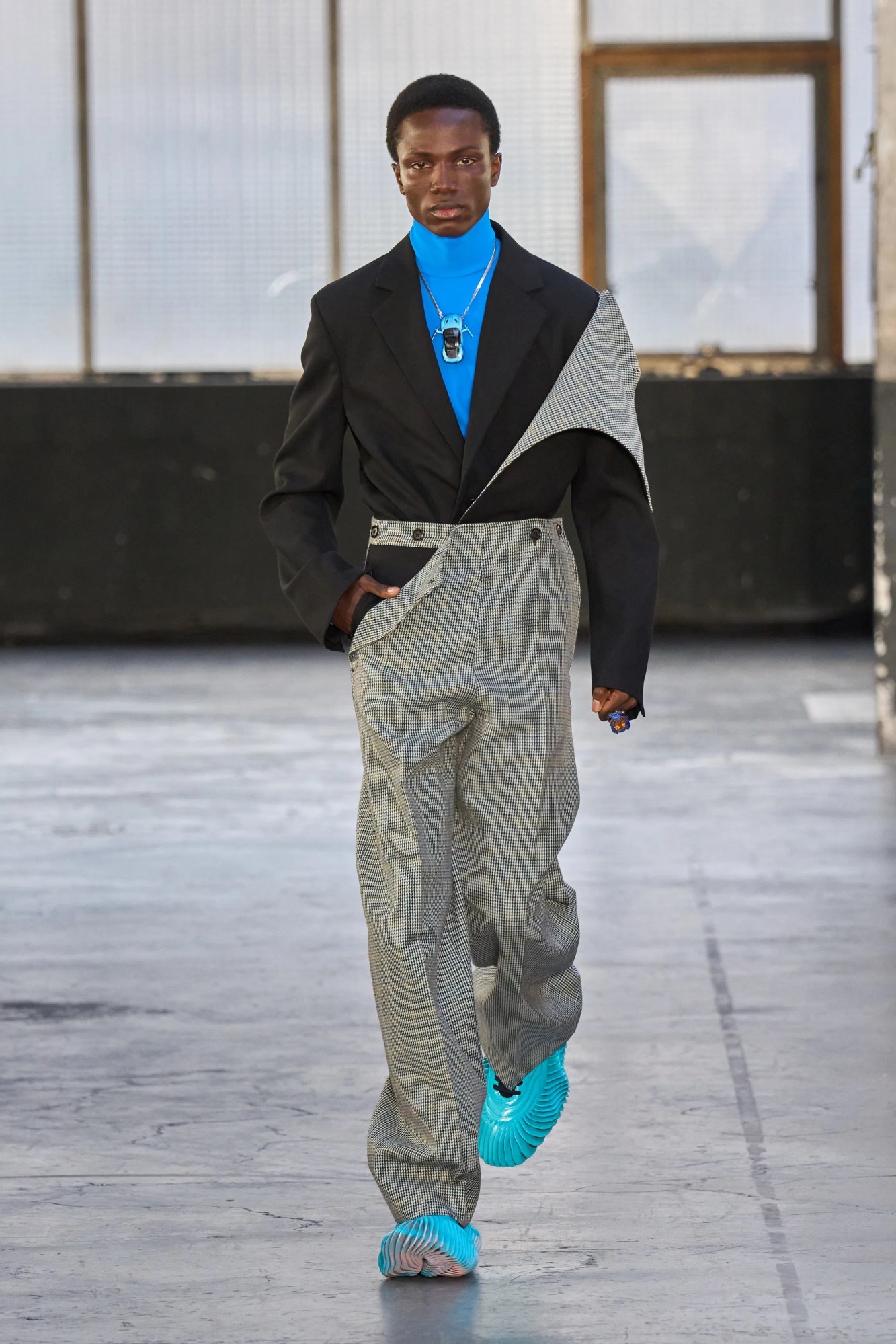
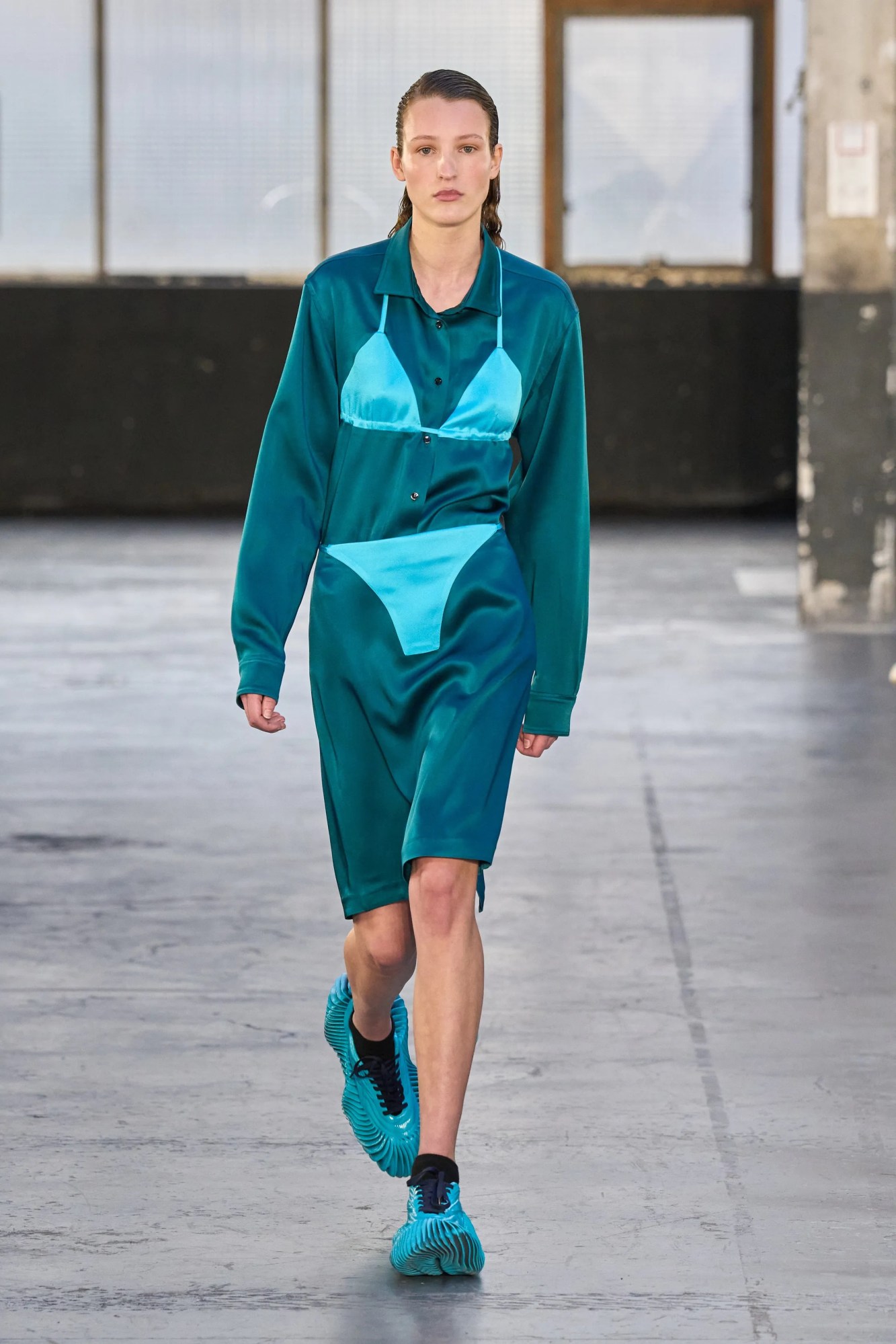
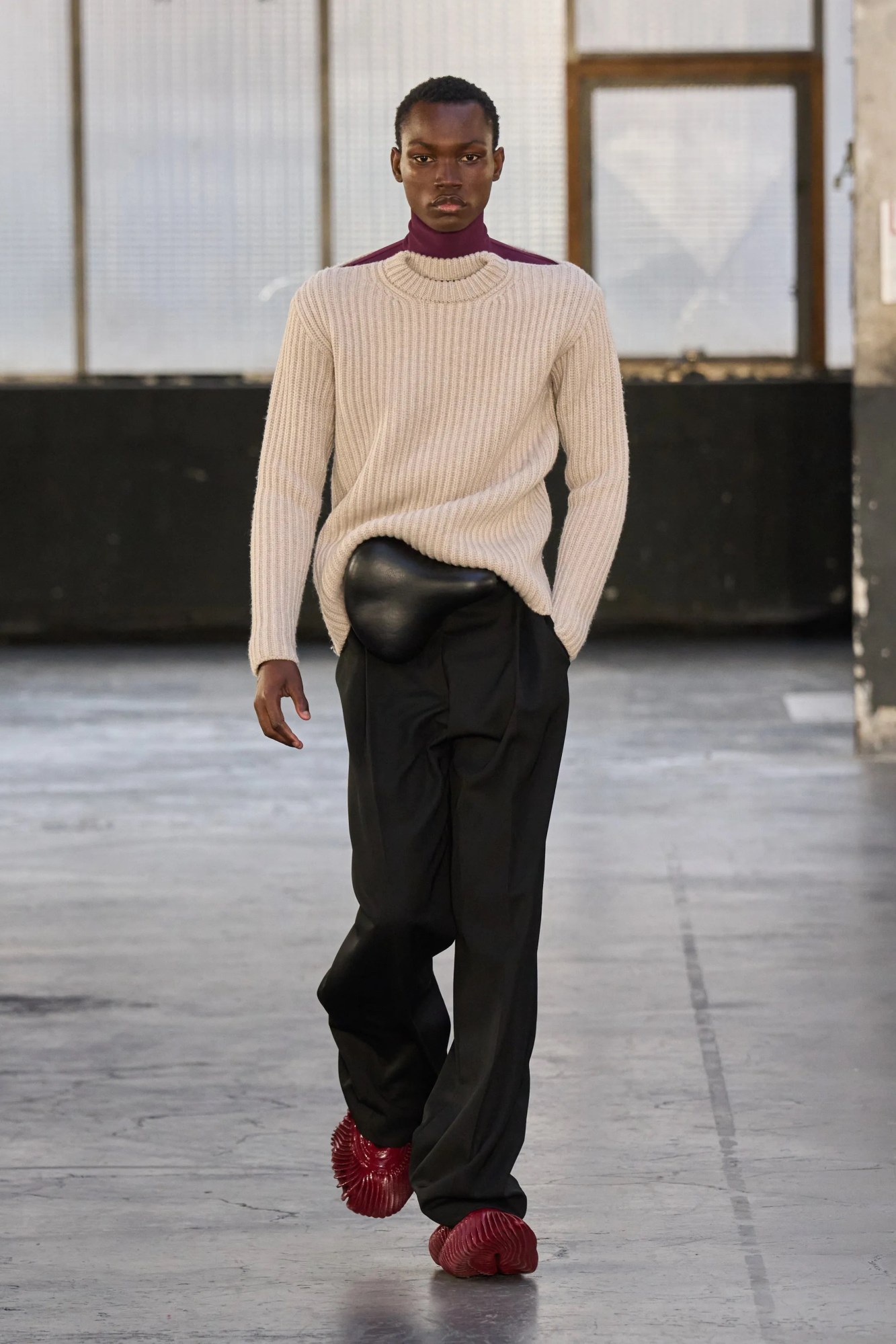
Botter
In the field of sociolinguistics, creolisation refers to the process by which disparate cultures and languages – typically brought to a single place through forced migration – begin to meld, forming new, commonly held cultural practices and languages. It’s a phenomenon that, for obvious historical reasons, is particularly widely attested to in the Caribbean islands, as well as other former (and existing) European colonies worldwide. In a broader context, though, “creolization is the force that brings human cultures into relation with one another,” say Rushemy Botter and Lisi Herrebrugh, “a process of relation that neither reduces the other to the same, nor resolves itself in a concrete, unchanging form.” This understanding of the notion served as the jumping-off point for the pair’s latest body of work, an expectedly brightly-hued collection that irreverently fused codes and conventions of dress. A notch-lapelled lime green suit came with a striped polo knit collar, while woollen cardigans unbuttoned at the underarm, allowing for the sleeves to either dangle by the wearer’s side or to be tied into an embrace across the body. A voluminous claret satin blouse – and another in POW check wool – were in fact languidly draped from pairs of trousers, bikini appliqués figured on a deep turquoise shirt and the front panels of lurid pink sweater was tacked onto a sky blue scuba top. Indeed, these were clothes that made you realise that what is familiar is not, by default, static – it can always be reimagined as something new.
Dior
T.S. Eliot’s The Waste Land is one of the most iconic works of Modernist poetry, a broken and disjointed text that emerged from a moment when writers were trying to use new literary mediums and devices to understand life after the devastation of the First World War. Published by Leonard and Virginia Woolf in 1923 — the latter also explored similar themes in her writing— the text was the unlikely inspiration for Dior’s AW23 menswear show, tapping into creative director Kim Jones’ ongoing obsession with the Bloomsbury set. Last season, his show recreated Charleston Farmhouse in Sussex, the home of Duncan Grant and Vanessa Bell, connecting it via a real-life garden to Granville, Christian Dior’s childhood home in Normandy. This time around, the British designer asked his friends Robert Pattinson and Gwendoline Christie to perform The Waste Land for videos filmed by Baillie Walsh, which were projected onto giant screens lining the catwalk. Check out the full review here.


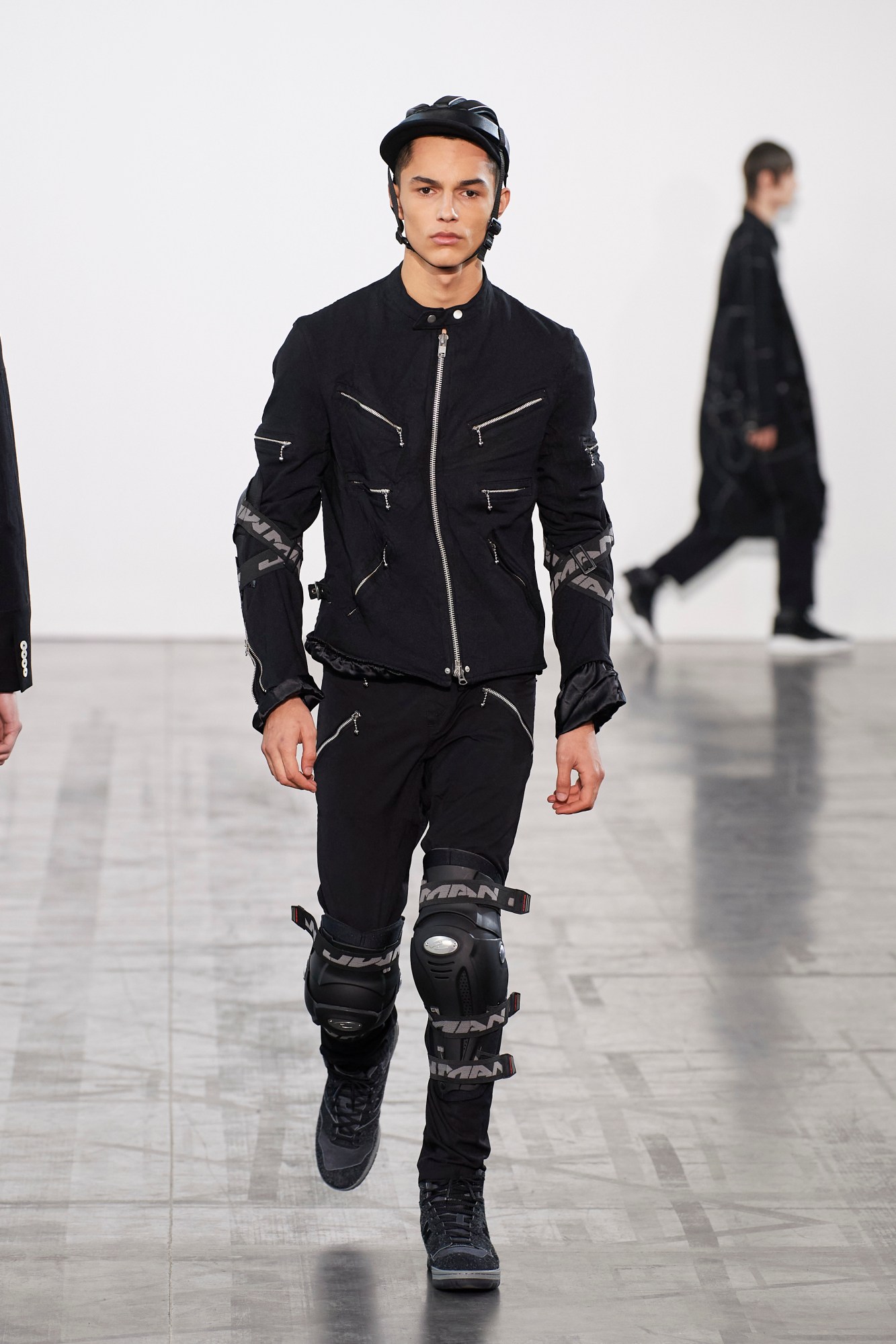
Junya Watanabe
Fashion designers are often ones for coming up with convoluted themes for their collections – high-minded justifications for what, ultimately, are often pretty basic clothes. Brilliant design, however, doesn’t require much in the way of explanation – it just is. This has always applied to the work of Junya Watanabe, the esteemed member of the Comme des Garçons family, but it was in the collection that the designer presented yesterday that that was made crystal clear. At the heart of it all was the notion of collaboration – that buzzword that, at this point, makes many of us seasoned fashion folk sigh and roll our eyes. While Junya’s AW23 collection was chock full of them – there were, in total, 18 other brands included in the mix in yesterday’s line-up – their deployment here was less about making cynical cash grabs, and more about interrogating the fundamental meaning of what collaboration in fashion even means any more.
Picking apart – and then reassembling – pieces from names spanning Oakley, Timberland, Levi’s, North Face and Palace (and revisiting archival pieces that were the result of previous collaborations with them), the end result was a predominantly black parade of eminently wearable clothes that stood out not for their worth as grail items, but rather for the fact that they seamlessly melded together into a cohesive body of work. Save for the occasional subtle logo placement, it was a collection that encouraged you to look at a blazer with a built-in North Face gilet through the same objective lens as you would at a patchworked tweed overcoat. Rather than the hype value of the collaboration, the focus here was squarely on the clothes.
Ami
“Carte blanche” is how Alexandre Mattiussi described Ami’s AW23 collection, which comes hot off the heels of a very busy year for the designer and his fast-growing brand. There were collaborations with Puma, more than 20 store openings across various continents, a show at the Sacré Coeur filled with iconic guests, presences at the Met Gala and Cannes film festival, and perhaps most memorably, an appearance in the third season of Netflix’s hit show Emily in Paris, in which the American ex-pat orchestrates a campaign featuring Ami logos emblazoned across hot air balloons. Alexandre’s new year’s resolution? Opt-out. “I don’t want to play that game,” he says of fashion’s increasingly frenetic spectacle. “You know, I just want to please myself, and please my customers.” Read the full review here.
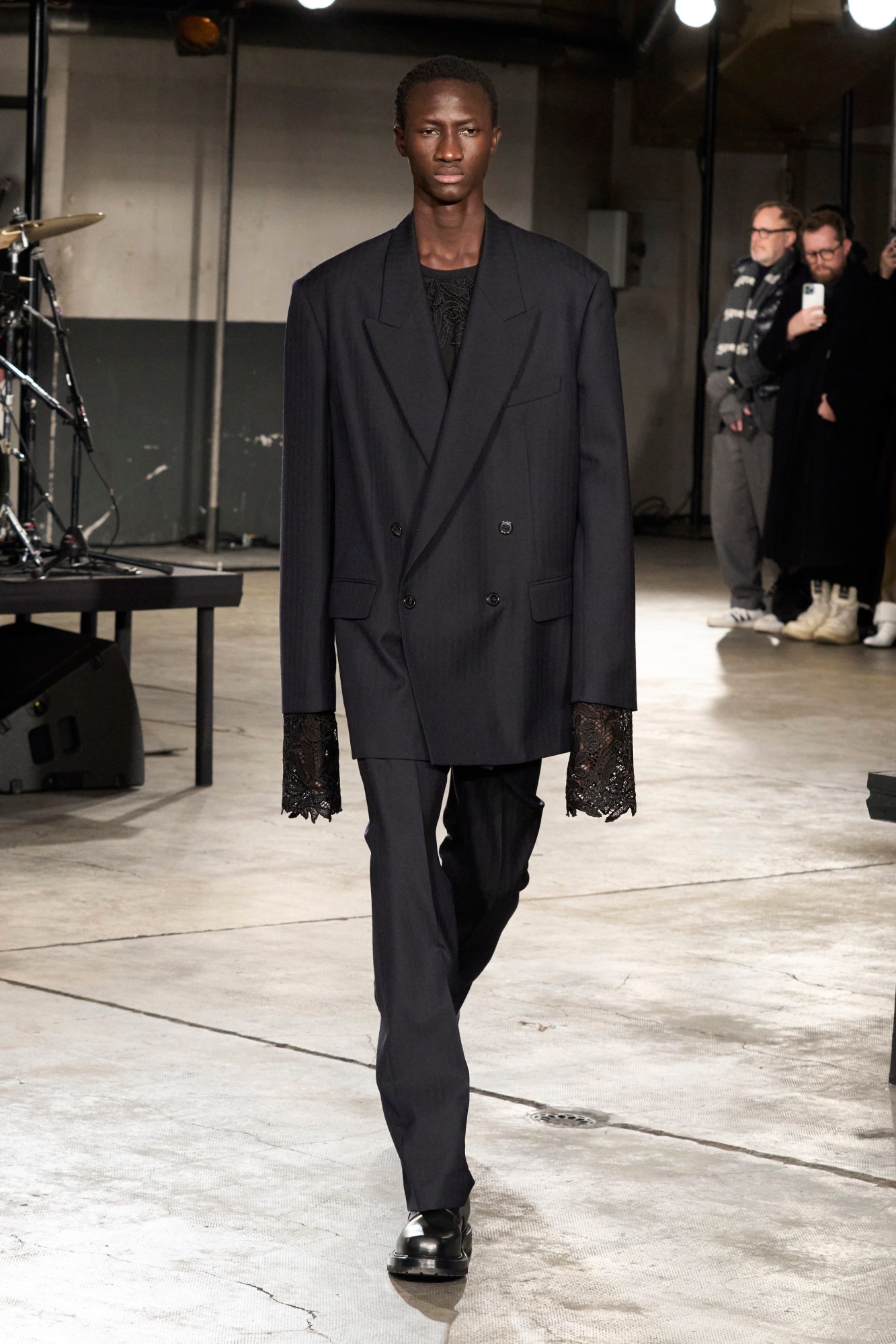
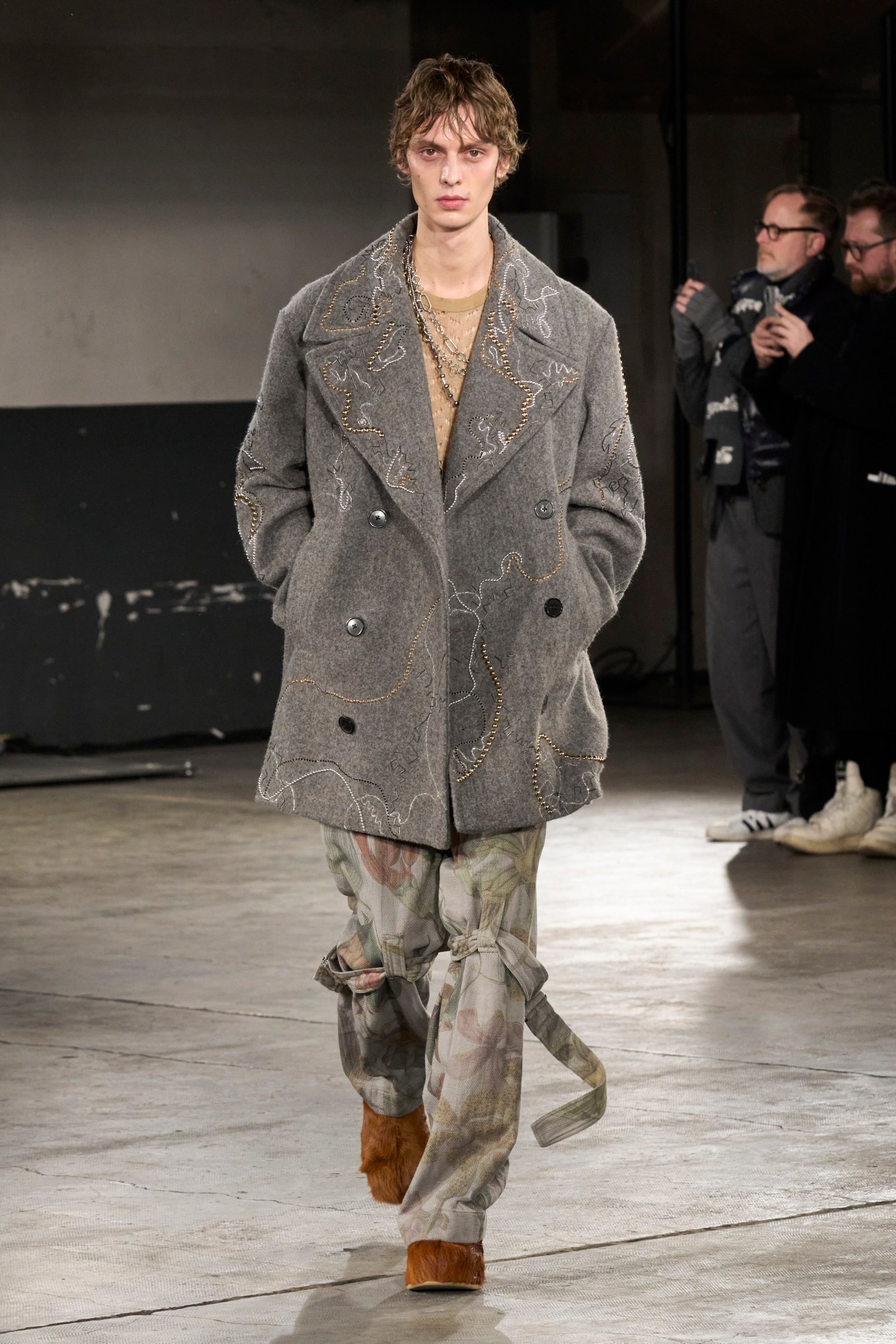
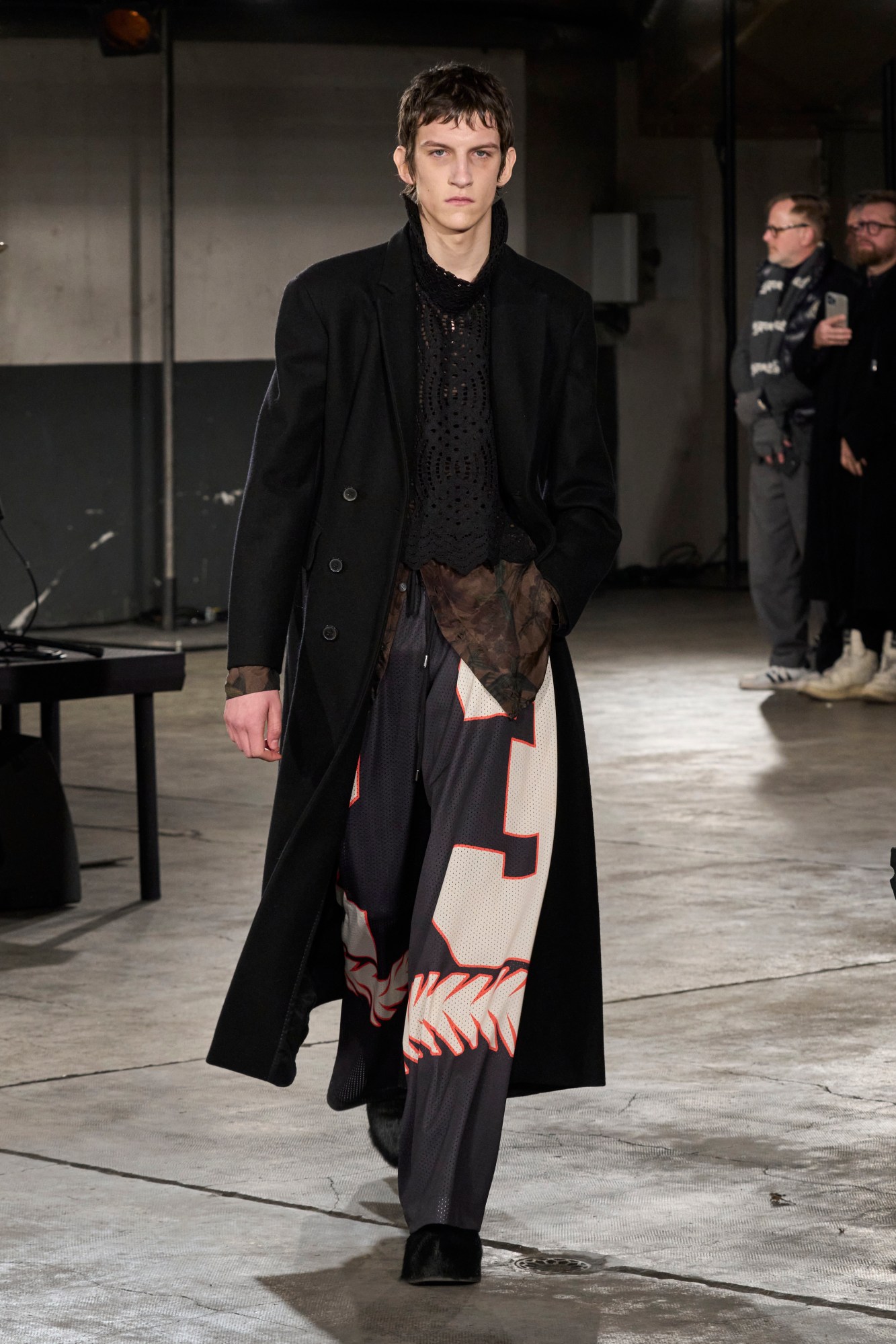
Dries Van Noten
It would appear, this season, that designers have taken a collective turn towards ‘wardrobing’ men, rather than decking them out in the extravagant, fantastical garments that we began to see glimpses of about a year and a half ago. Reasons for that are pretty easy to deduce – at a time when the world seems to be teetering on the brink of major economic collapse, showcasing parades of pageant-ready menswear is perhaps a little on the nose – a bit Nero on the fiddle with Rome in flames. That is, of course, all very well, but it does sometimes leave us wanting for menswear that feels truly special – elevated above the humdrum of quotidian dress.
Last night, Dries Van Noten – a kingpin of tastefully extravagant menswear if ever there was one – proposed a collection that seemed to bridge this gap between discretion and exuberance, an ingenious 60-look spread of clothes that felt incredibly considered, but wouldn’t feel pompous to wear. From triple-belted high-waisted trousers worn with merino sweaters with the collar yanked down to elongated, slope-shouldered jackets with lace cuffs and heavy wool overcoats and blazers that featured quietly trippy botanical prints – the sort of graphics that grow more enthralling the more time you give them, rather than reveal all at first glance.
Though the opening half or so of the looks came in cool monochrome tones – a surprise from a designer widely known as a maestro of colour – the latter half brought luscious satin peignoirs and silk velvet lounge pants in muted jewel tones, breezy linen trousers daubed with verdant brushstrokes and canvas gardening separates – after all, we all know about Dries’ green fingers! – printed with powdery floral motifs. Though it has at times this menswear season felt as if we living through a famine of beauty – to quote the late André Leon Talley, who passed a year ago this week – with this collection, Dries gave us something to chew on.
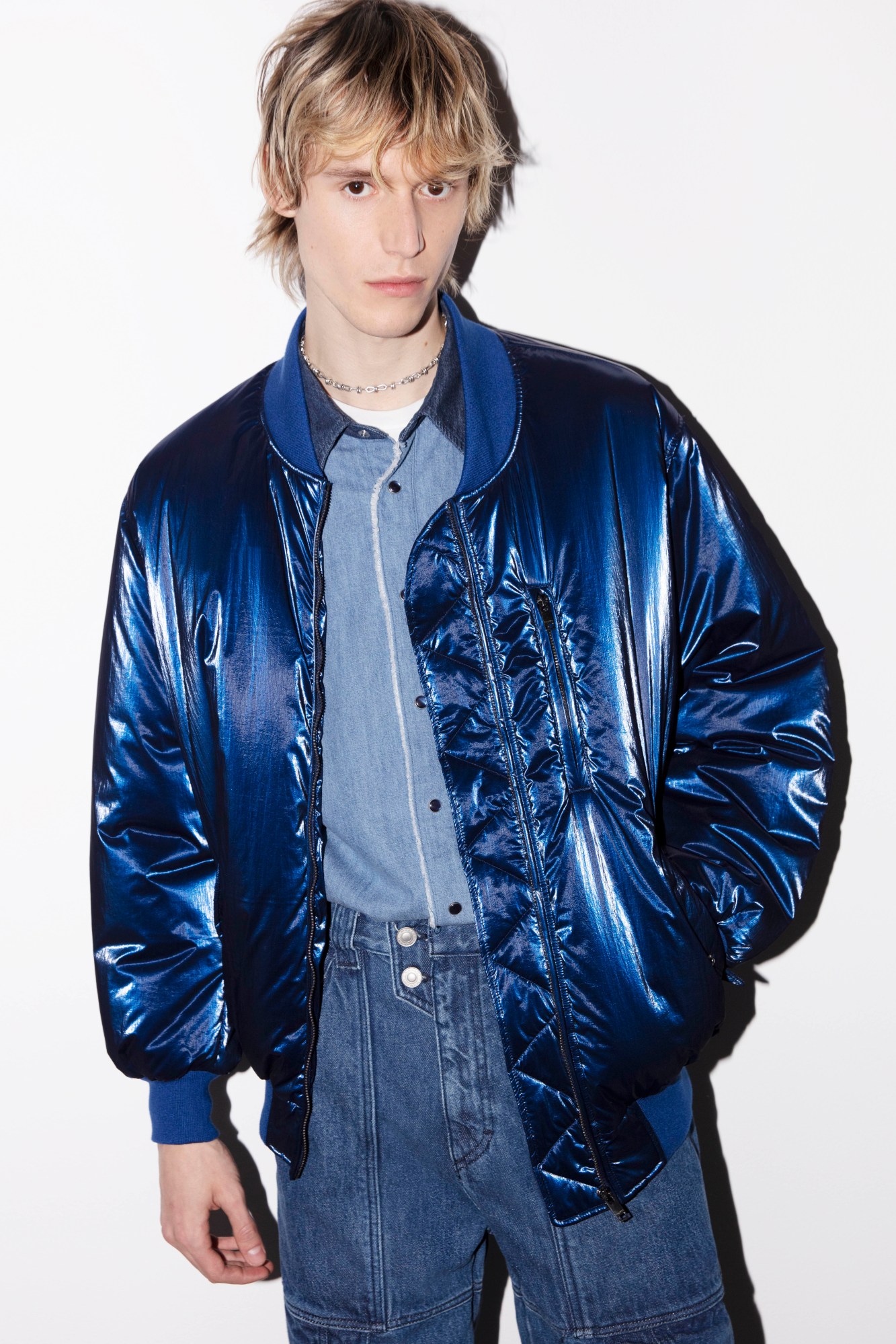
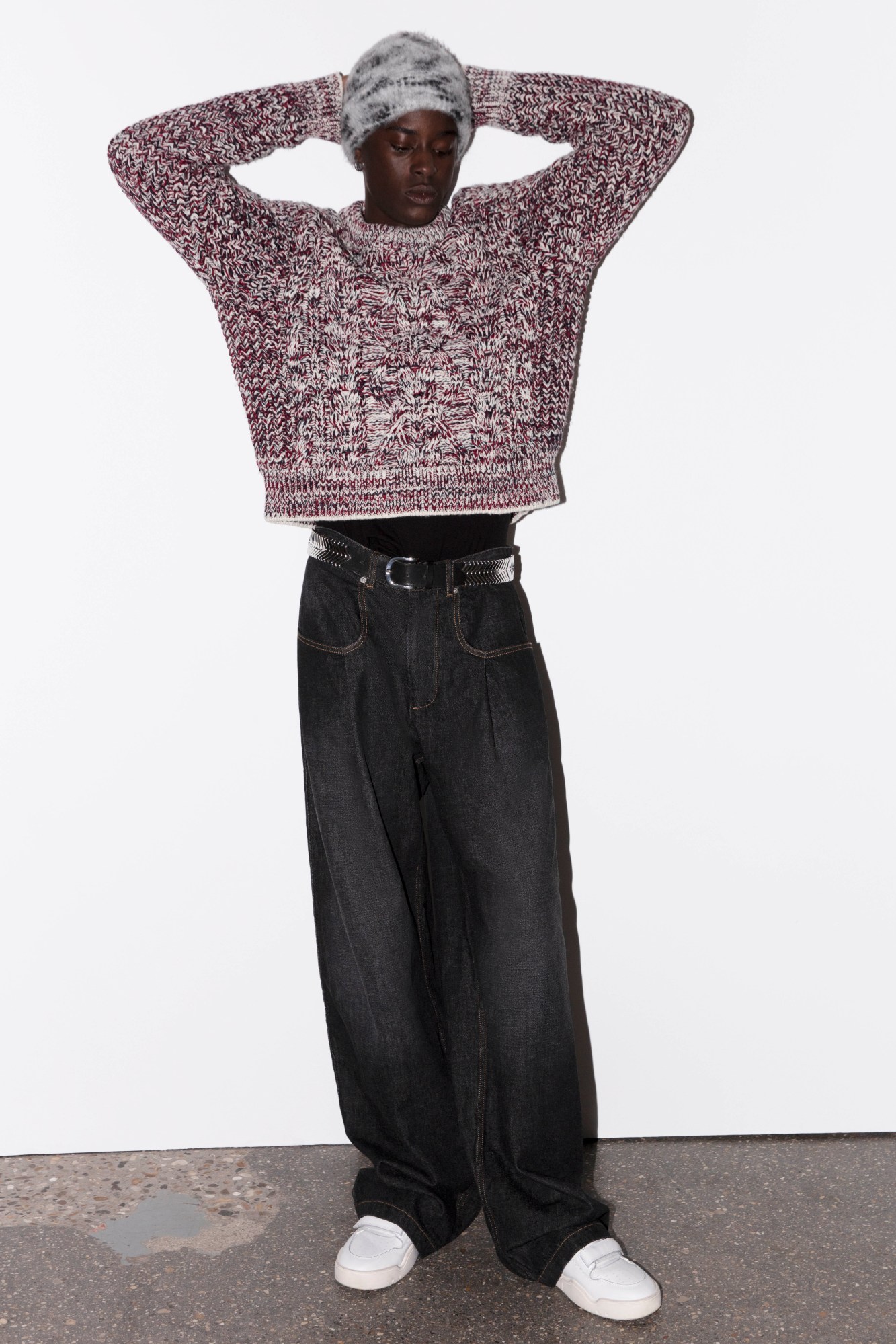
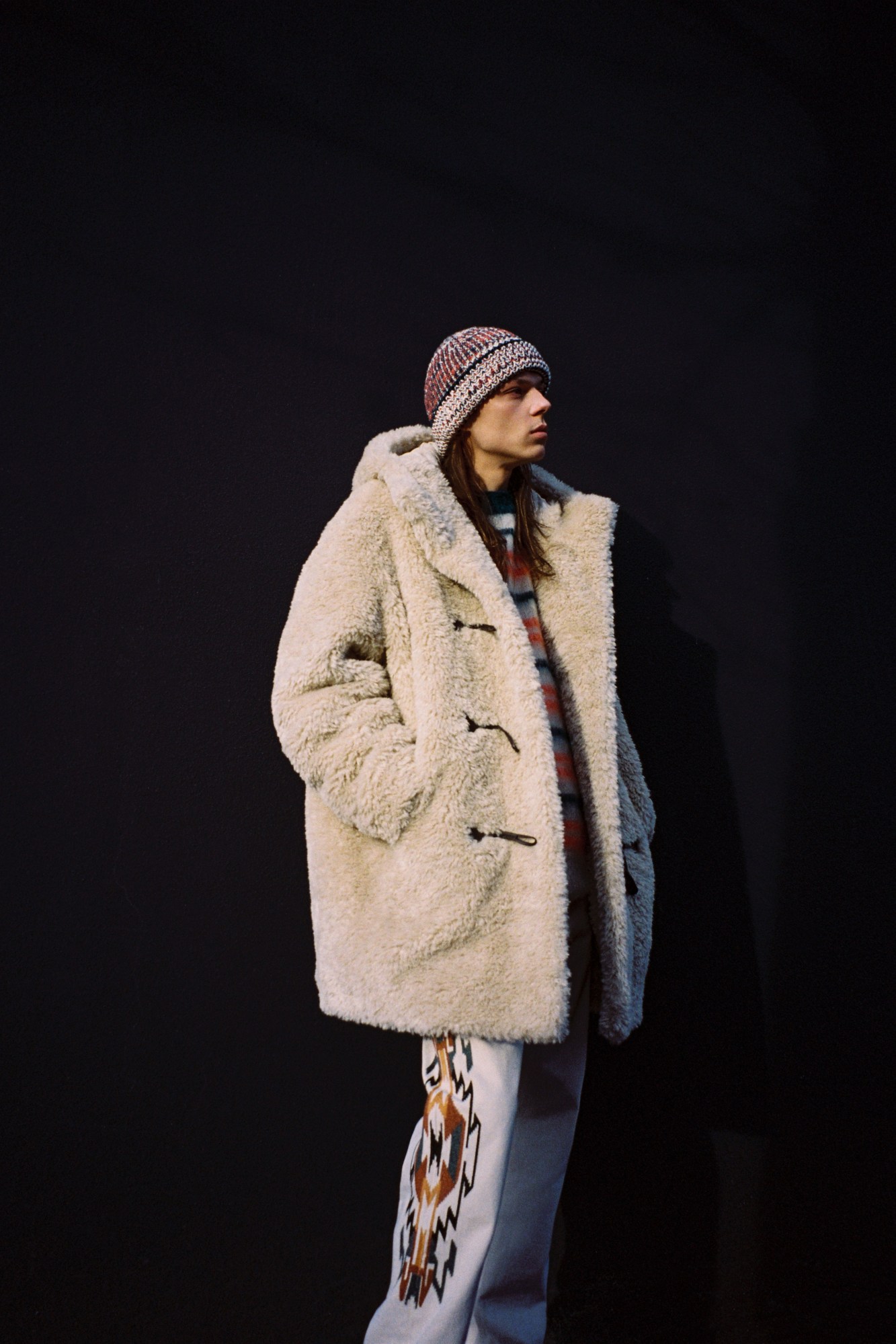
Isabel Marant
In times as goddamn dreary as these, there’s one designer you can always turn to for a healthy jolt of Gallic joie de vivre. Mais oui, c’est Isabel Marant! Granted, this season has seen the famously exuberant designer take a grungier tack with her latest menswear – looking to Christiane F.–era Berlin and 90s London subcultures for inspiration – but rather than melancholic, the collection these references have percolated into felt defiantly – joyfully, even – punkish, not forlorn. Wardrobe staples like straight leg acid wash jeans, quilted jackets and cosy cable knits are elevated by the zingy flashes we’ve all come to expect from Isabel and her team – foiled cobalt bomber jackets, bleached-out striped mohair knits that will trigger a Nirvana playlist in your head at first sight, frizzy wool pullovers the colour of bubblegum, and sunset-hued plaid gilets. All in all, a collection that proves that, as moody as the general atmosphere may feel, that’s no excuse for funereal dressing – as Isabel well proves, there’s always space for a sprinkling of joy.
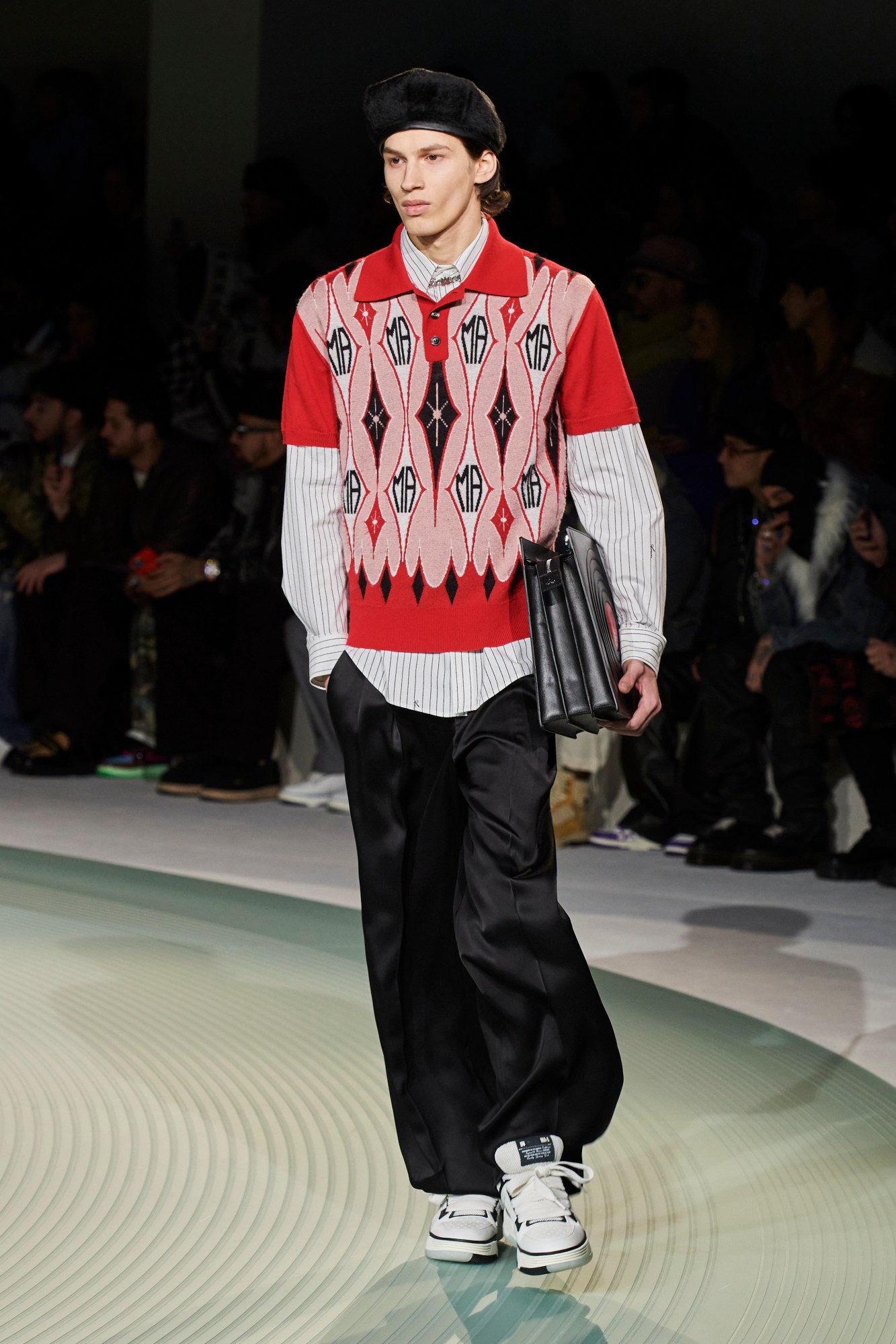
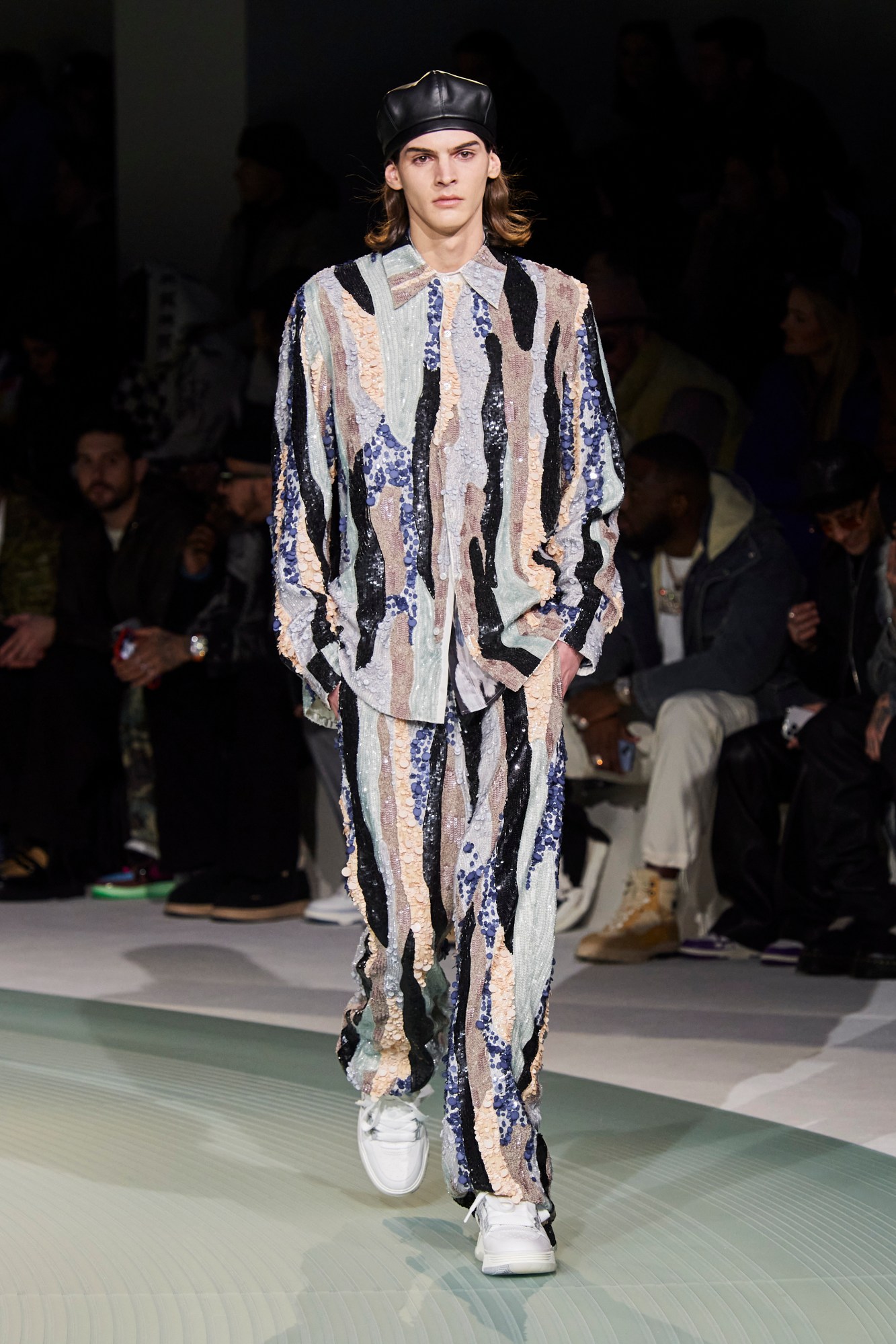
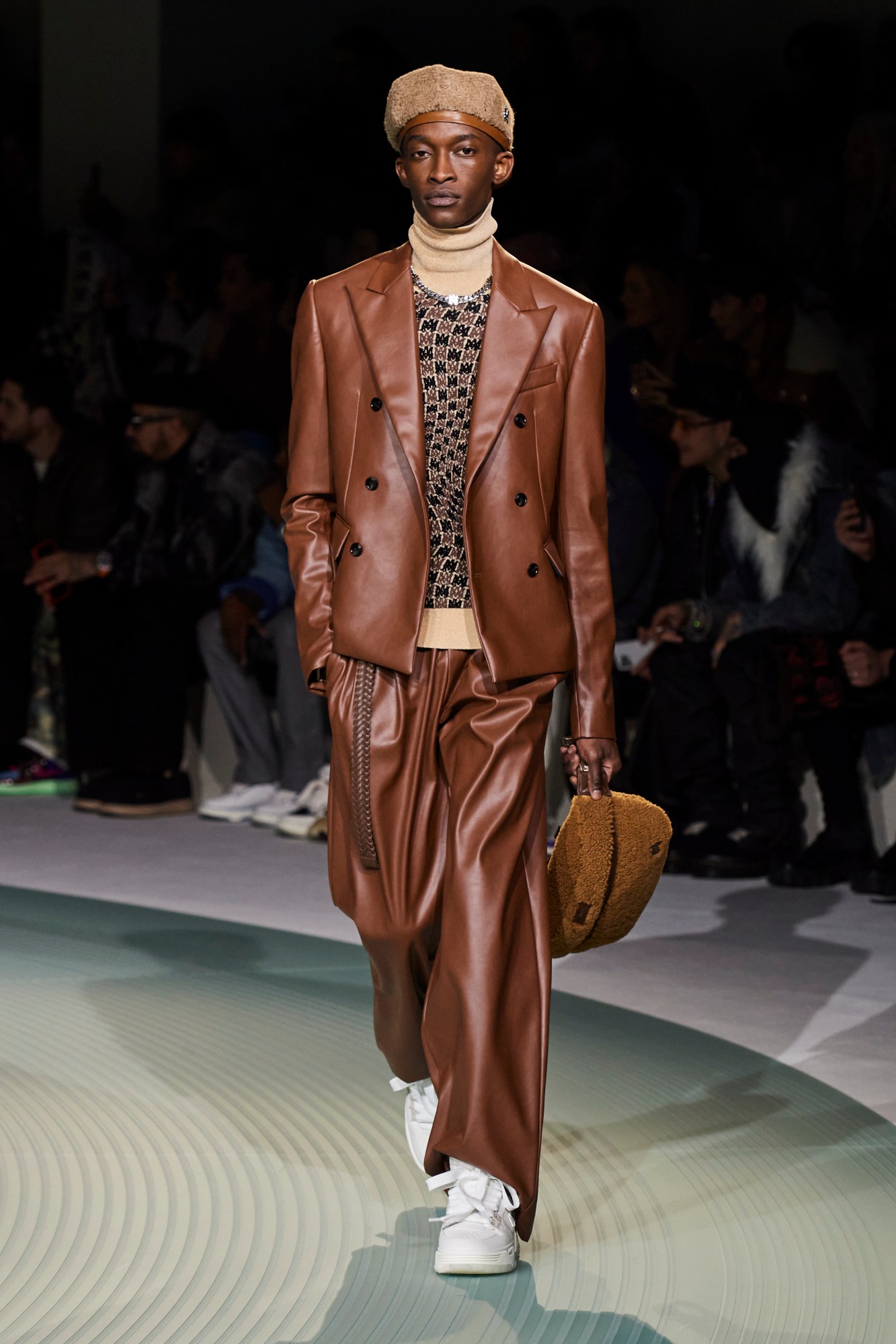
Amiri
Music has always been a pillar of Mike Amiri’s vision for his namesake – previous collections have seen him draw inspiration louche, python and drainpipe denim-clad rockers and breezy West Coast rappers, and during the pandemic, the cinematic odes to Tinseltown he presented in lieu of physical shows were often accompanied by custom soundtracks from some of his favourite artists. In this, this season was no different for the Angeleno designer, who hopped across the country to collaborate with legendary New York producer on the show’s soundtrack. Still, important as music was to the genesis of the collection that we saw yesterday, the main focus was less on the sound itself, and more on the process of making it. Indeed, the freeform experimentation that defines any good studio session was Mike’s primary creative impetus. Taking relaxed tailoring as his baseline, the formality of suiting was cleverly subverted – or remixed, you could say – with blazers rendered in the casual proportions of a varsity jacket, or suits cut in buttery tobacco leather or brushed wool. Sober grey cashmere coats were counterposed by shirt and trouser sets cobbled together from scraps of fabric salvaged from the cutting room floor, imbued with the vibrancy of an expressionist painting, and the vintage-y cosiness of fair-isle knits met the insouciance of baggy skate trousers and in glossy cashmere and feathered mint green wool.
Louis Vuitton
Outside Louis Vuitton’s AW23 menswear show, thousands of teenagers are cheering on the Essex guy from Emily in Paris as he jumps on top of a limousine. Inside, a maze of quintessentially adolescent bedrooms designed by the Gondry brothers, and Spanish superstar Rosalía staging a full-on pop performance that’s part vocal part immersive role play. Welcome to the Louis Vuitton circus, a kaleidoscopic universe, a sort of weird-and-wonderful playground where bright colours, countless celebrities and as many LV logos as possible come to life on a giant catwalk. Since the passing of Virgil Abloh, the house has been producing studio-designed collections that riff on the themes of his collections, ostensibly getting bigger and more spectacular by the season. This time round, the house announced the collection would be under the creative direction of KidSuper’s New York-born designer, Colm Dillane, as well as stylist Ib Kamara. Together, they developed a collection that continued on one of Virgil’s leitmotifs: the tropes of childhood, reimagined as kitsch luxury. Want to hear more about the clothes? Read the full review here.
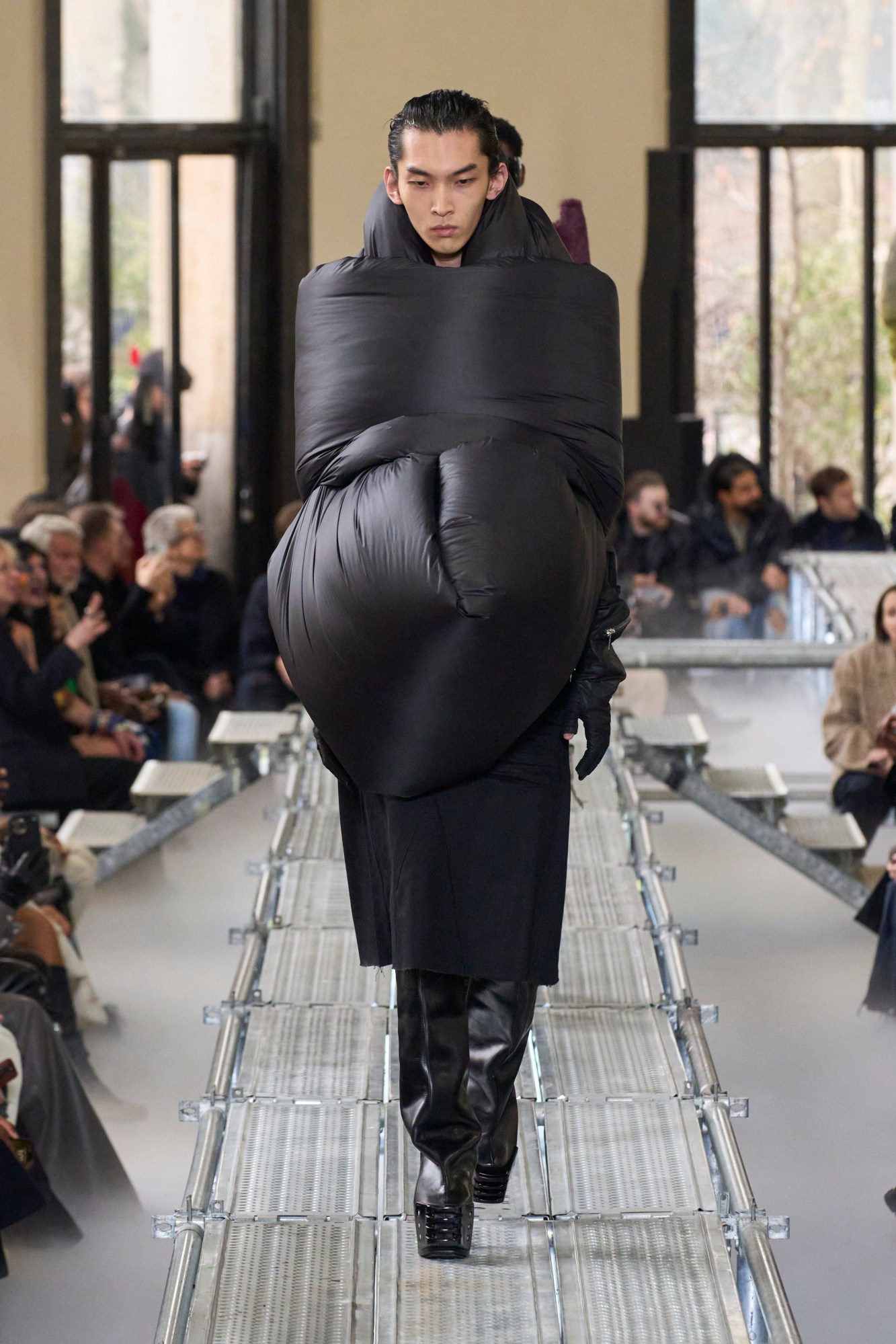
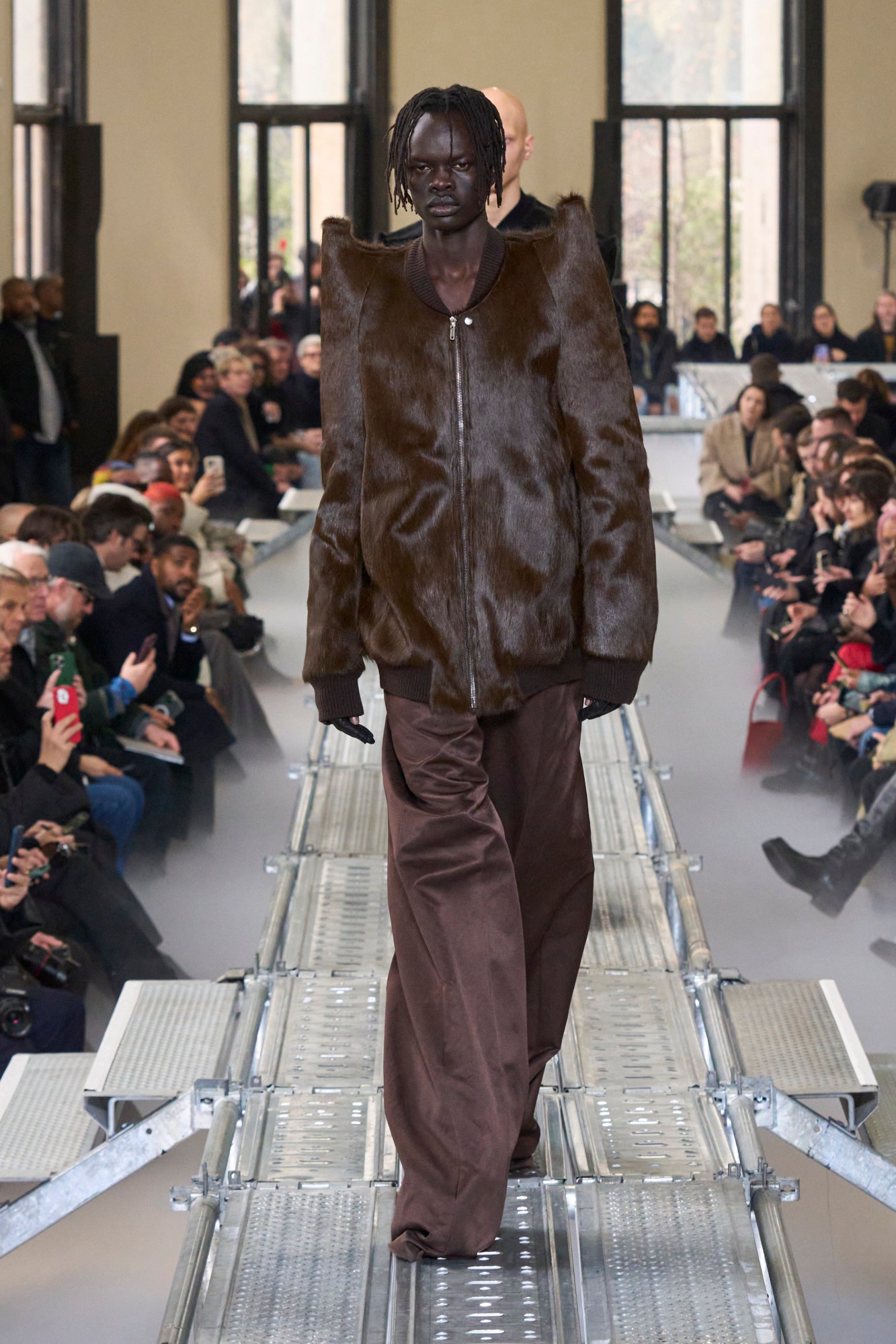
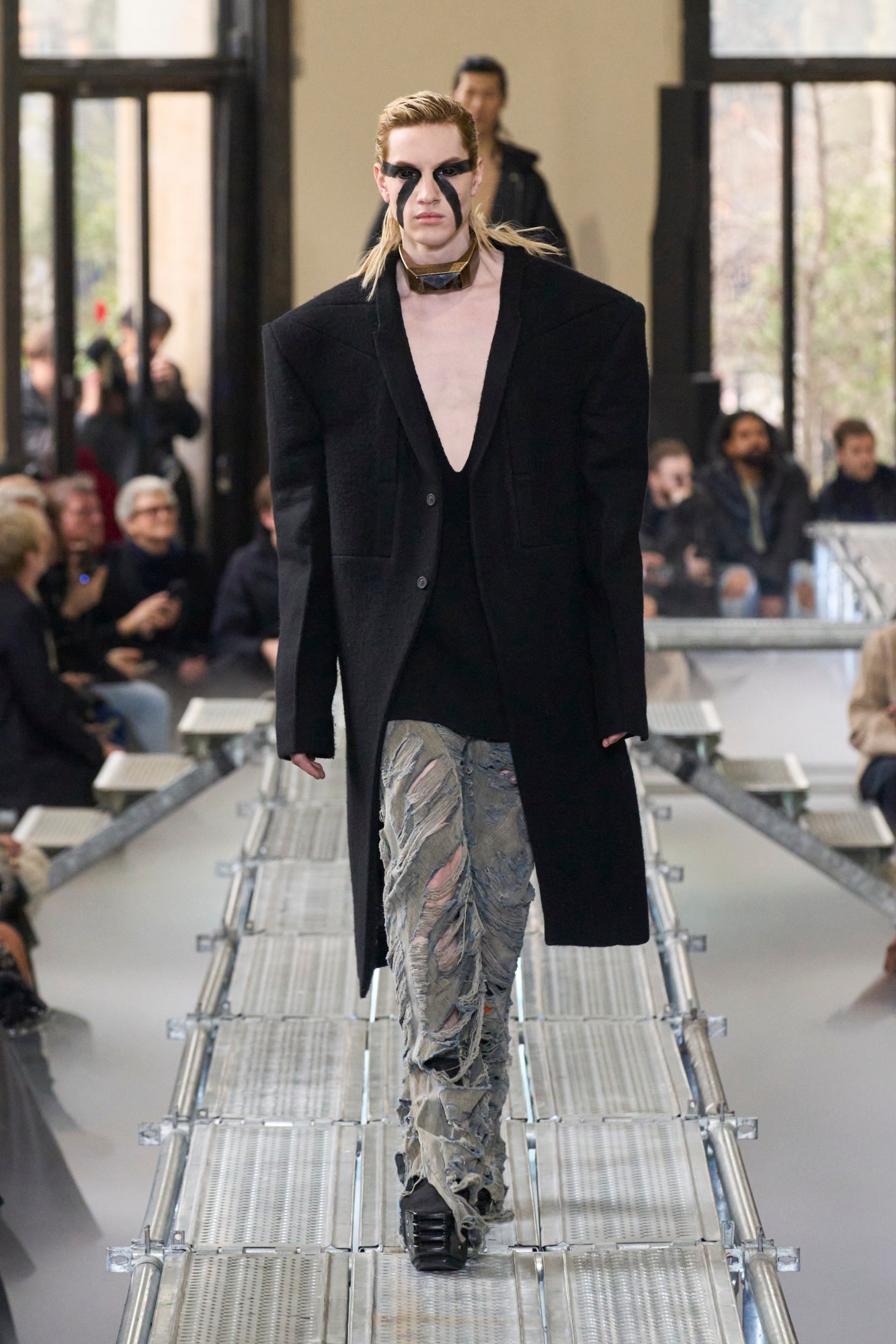
Rick Owens
Cairo may have captured the fashion world’s attention late last year, when Kim Jones lit up the actual Pyramids of Giza for his latest far-flung razzle dazzle at Dior, but for Rick Owens, Egypt’s true treasure lies further up the Nile – Luxor, the ancient city fairly described as the world’s greatest open-air museum. It’s a place that he’s referenced in previous collections – for his last menswear, he mused how his first-hand encounter with the sublime permanence of the obelisks, temples and statues of the Valley of Kings had put the trifles of our current times into perspective. How, no matter how grave and urgent our situation may seem in the here and now, civilisations that have thrived and burnt out have no doubt experienced the same – and the same will go for those that come after ours, too.
Anyway, this season, while this existential sombre tone certainly coloured the collection rick presented yesterday, it was buoyed by a fantastical mysticism. Named after the cradle of Ancient Egyptian civilisation, jackal-thin all-black silhouettes – shoulder-shrouding capes, elongated vests with geometrically panelled leather, gilets with the linebacker carapace of a shoulder that Rick has made a signature over the past few seasons, and cropped jackets with nipped waists, all worn with a wider cut riff on the brand’s viral Kiss boot. They evoked a sober conservatism; a response, Rick writes in his trademark all-caps – to the almost-Victorian puritanism that colours contemporary social debate. Just look at the UK government’s slate of Dickensian policy plans for proof.
This monastic severity soon gave way to the camp that Rick has been liberally flecking his collections with since our collective return to free, post-confinement living – moss green cowhide bombers with Hathor-horned shoulders; flowing jersey gowns worn with hulking padded leather boleros; puffer ‘coats’, I guess you could say, that looked more like swollen musubi knots. Still, for all the sculptural show pieces, this was also a collection that also had a consciously pedestrian flair to it – with a suite of shrunken sharp-shouldered jackets, voluminous flight jackets worn over baggy mohair twill trousers and tattered denim jeans. Rather than a capitulation to ‘conservative’ or ‘normie’ dressing, through warped proportions and off-kilter fits, it read more as a slight perverse ribbing of it – a knowing smirk at a drab status quo. And if there’s anything we need from fashion right now, it’s just that. MS


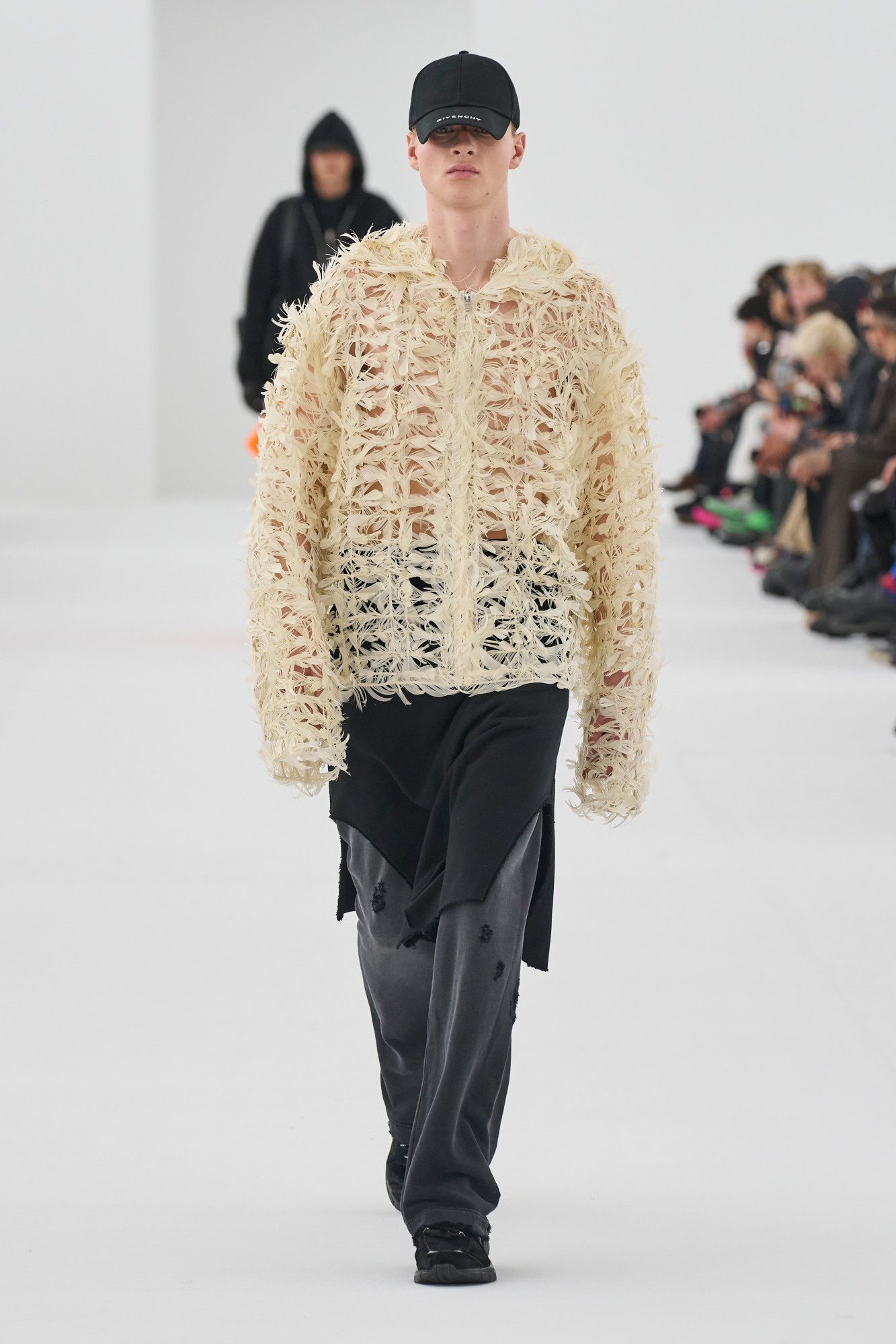
Givenchy
Givenchy’s AW23 menswear show was perhaps one of Matthew Williams’ best yet. It opened with razor-sharp suits, severe in their all-black silhouette against the stark white-cube backdrop, which were crafted with the help of Givenchy’s couture ateliers. It felt like a prelude for a collection that was all about deconstruction and reconstruction. Couture, the highest and most meticulous form of dressmaking, followed by denim and sportswear. I know what you’re thinking: Groundbreaking! Except, there was clearly a high level of workmanship that went into what followed that challenged any scepticism. Matt’s big idea was to take a broad cross-section of archetypal garments – denim, sportswear, punk tartans, tailoring, basics, utility — and create garments that are collaged together, almost like striped patchworks of various Americana motifs. What appeared as onion-like layers of baggy clothes styled together was in fact just one garment, which not only is clever but also great bang for your buck. Think about it: buy one piece, and you’ll look like you own seven. Not that anything was diluted. In fact, every element was also the result of immense craftsmanship: Japanese boro stitching was used on denim, a hand-plumed feather hoodie was done on a 4G grid structure, the colours of metallic flight suits in polyurethane-coated nylon were achieved through painstaking garment dyes, and the yellow paint of the back of a sheepskin flight jacket comes through its distressed front.
The result appeared effortless, brilliantly made and yet effortlessly stylised, almost like the sartorial equivalent of a luxury readymade meal. Come autumn, shoppers can replicate the runway looks without having to put anything together themselves, except for adding some of the leather and washed-canvas paratrooper boots. Those slick suits that opened the show — as well as the broad range of très classique square-shouldered overcoats and blazers throughout the collection — suggested self-awareness, too. Critics may be quick to dismiss the idea of sportswear and denim at a French couture house as radical ( at this point, it isn’t) but ultimately Matthew is taking the language of contemporary menswear, the real-life clothes that form the backbones of his and his mate’s wardrobes, and applying a considered level of construction and experimentation to them, elevating them into one-of-a-kind items you definitely wouldn’t find in a thrift shop or streetwear store, or easily replicate with mere styling. The cargo pants hacked open over sweatpants and boiler suits folded over the waist both resembled skirts, albeit in a different way — again, a fresher take to the vogue for boys in skirts. You get the sense Matt has just hit his stride. His exploration of casual-versus-formal has never looked better. And just like the layers of flannels, grey marl, distressed denim, and camo suggests — there it suggests a newfound depth to his work at the house. Givenchy is finally getting into its groove. MS
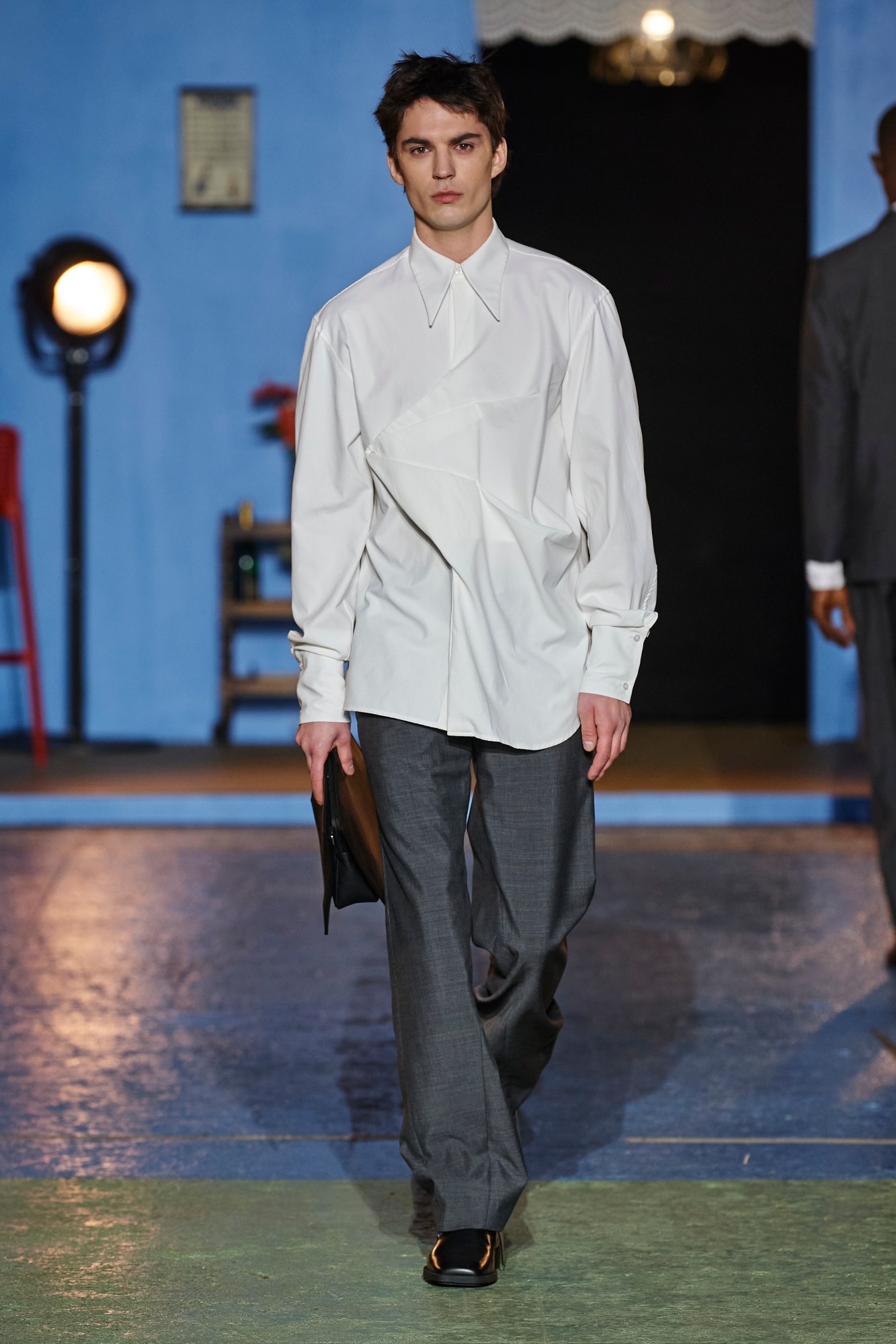
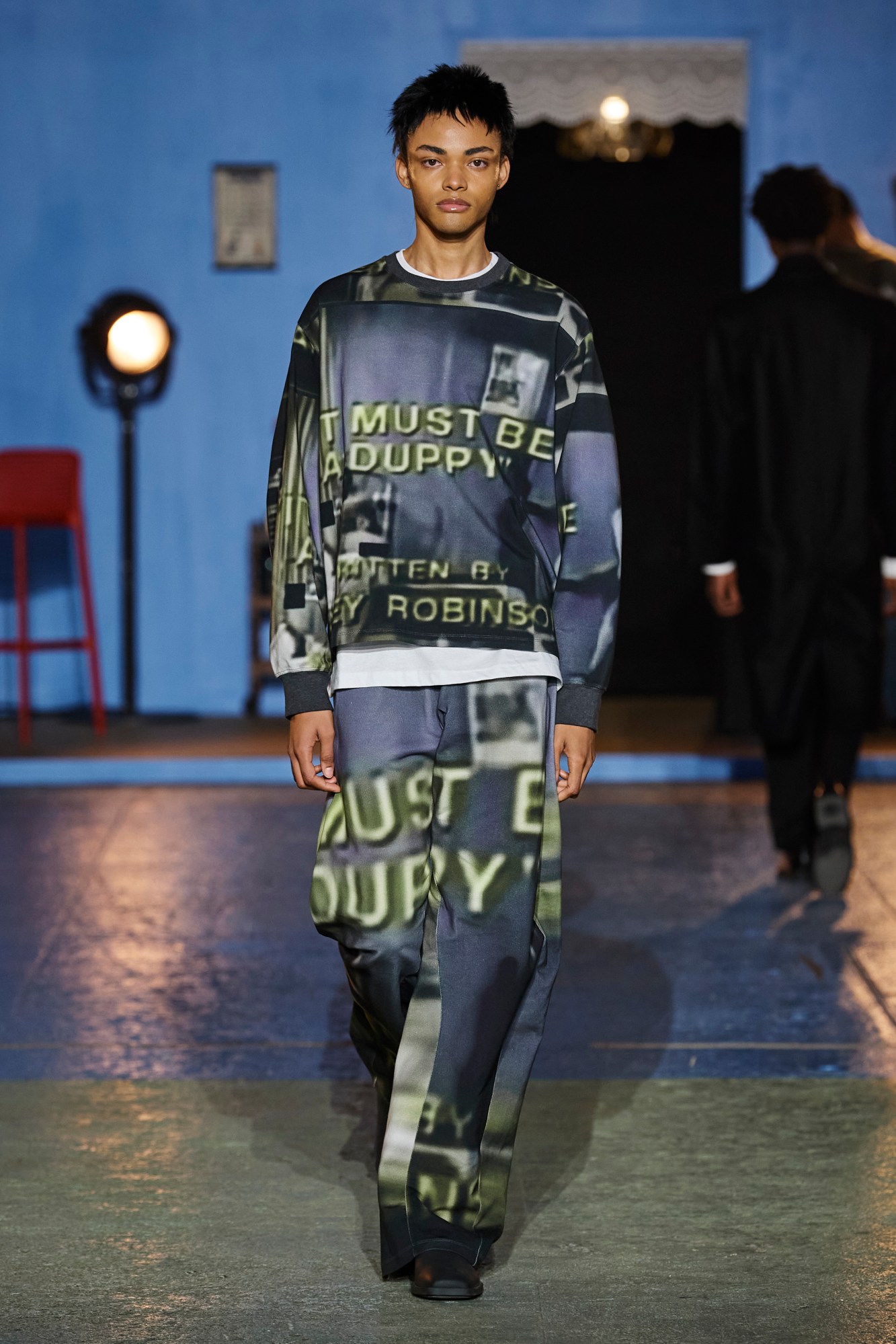
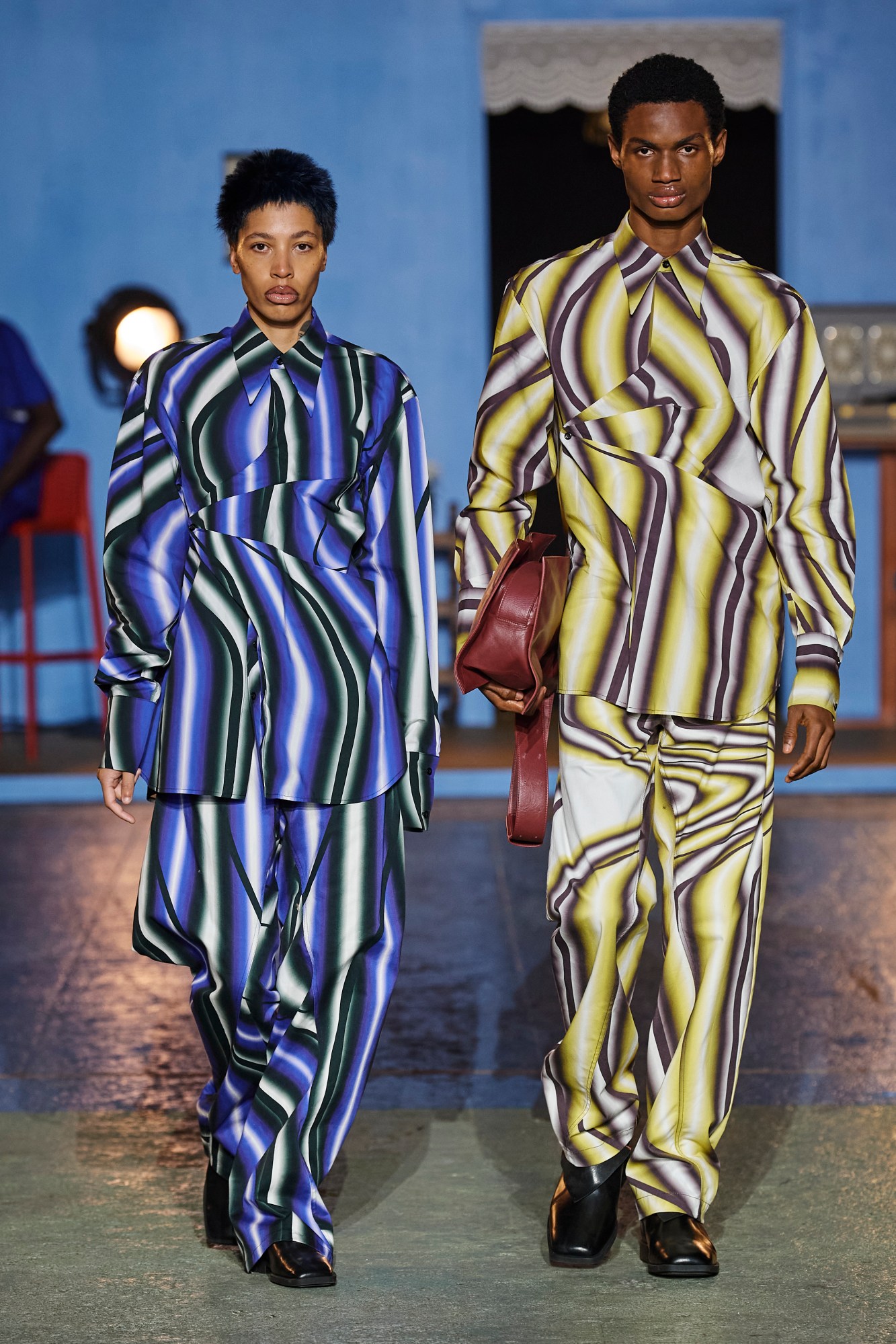
Bianca Saunders
Oliver at Large may not mean very much to you if you don’t watch much Jamaican TV, but if you do, then reading those words will most likely have elicited a knowing grin. Known as Jamaica’s ‘King of Comedy’, Oliver Samuels sketch show is a household staple, known for its whip-fast one-liners and witty plot lines. While Bianca Saunders is an avowed fan, it was not, however the comedy content of the show that she found herself drawn to this season – rather, her eye was drawn to its endearingly ramshackle staging – the seemingly impromptu bar and bedroom set-ups that are brought to life when animated by the shows larger-than-life characters.
It got her thinking about clothes in a similar way – thinking of garments as ‘staging devices’, if you will, that are animated when worn. Against the backdrop of a cornflower blue bar-cum-living room, models walked out in – at first glance – pared-back looks that revealed the technical savvy involved in their making. Stretched-out denim and leather bombers turned to the side to reveal a swooping, carapace-like silhouette – the result of an upward lurching back cut-out – and banana-legged trouser legs were the result of a seam that swirled outwards from the inner thigh. Wool overcoats featured gathers on the breast, creating the illusion of hand-in-pocket swagger; technical satin overcoats were done up with lingerie fastenings; and a tuxedo jacket was reimagined sans collar, and paired with shirts that had collars spun around to place the placket along the shoulder. These subtle tricks were counterposed by lurid, printed separates – lysergic swirls and a purple curtain motif to really hammer the notion of ‘staging home’ – with the most notable being the abstracted image of Oliver himself, almost indiscernible when seen close up. Like what you see here? Well, all the more reason to lock in for an Oliver at Large binge over the weekend! MS
Saint Laurent
Yesterday evening, in the frescoed concrete rotunda of the Bourse de Commerce – the art foundation owned by Francois Pinault of Kering — Saint Laurent’s menswear came full circle. In the literal sense, guests were seated on a circular leather sofa, but also because this marked somewhat of a homecoming for the French house, which has chosen to show Anthony Vaccarello’s menswear collections in far-flung locations in recent seasons (LA, Venice, Marrakech, to name a few). Besides, the mood of this collection couldn’t have been more Parisian. Almost entirely black, the pin-sharp glamour was rooted in the seductive darkness of the French capital, bringing to mind the linchpin to Saint Laurent’s heritage: Helmut Newton’s 1975 photo of an androgynous woman standing in a hazily lit Parisian alleyway, dressed in a Saint Laurent tuxedo, hair slicked back, crisp white cravat, cigarette in hand, and entwined with a model dressed only in black stilettos. Read our full review here.
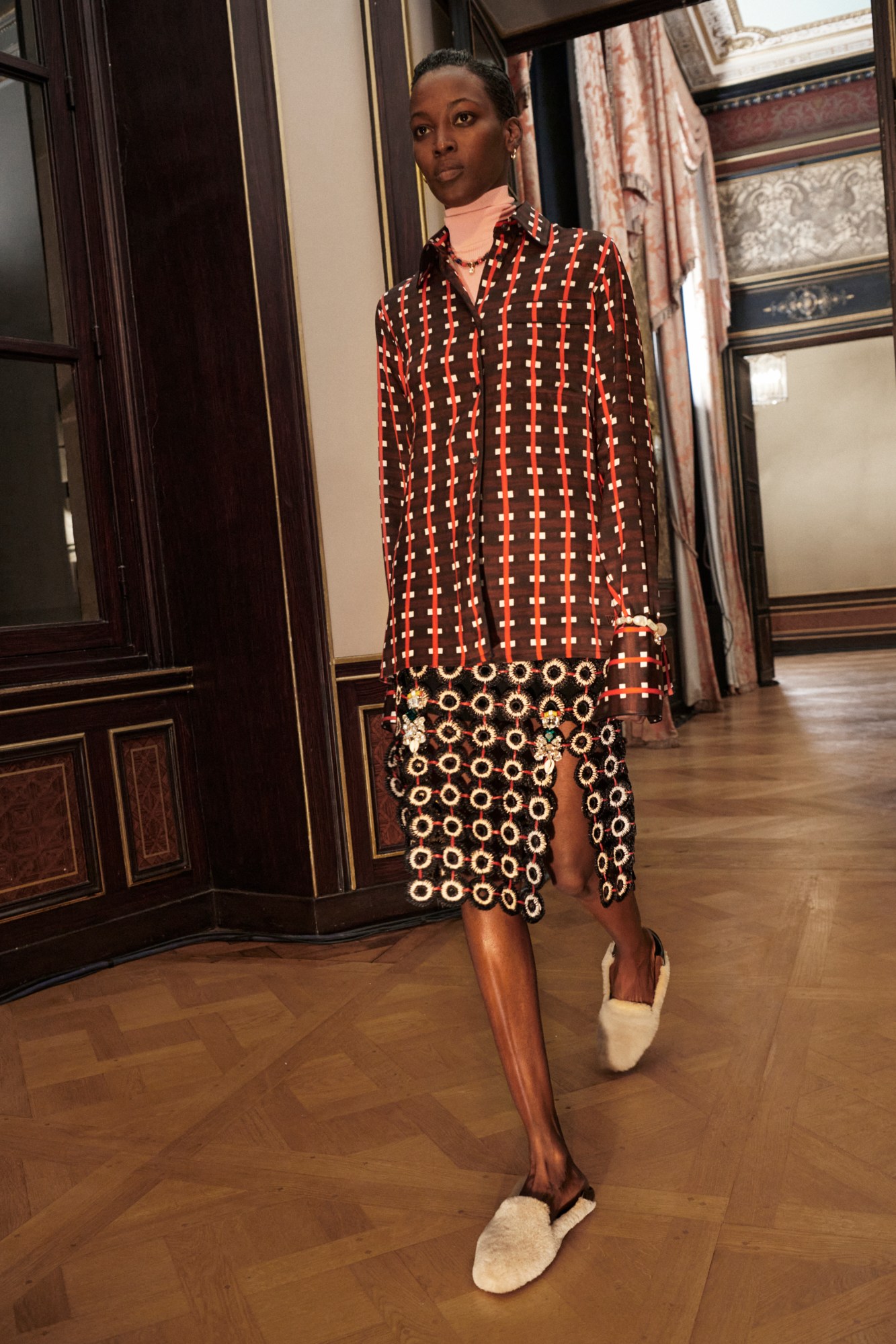
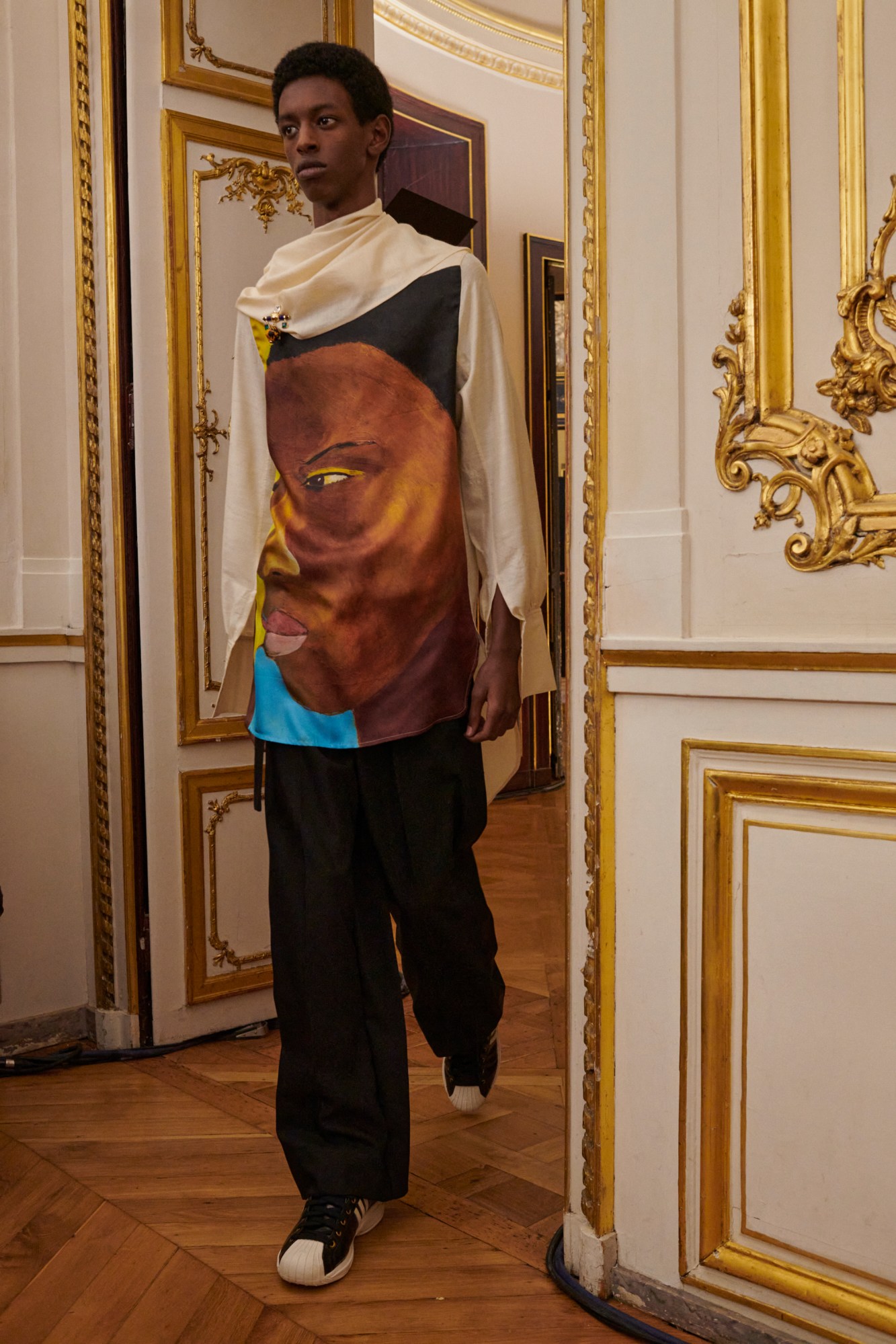
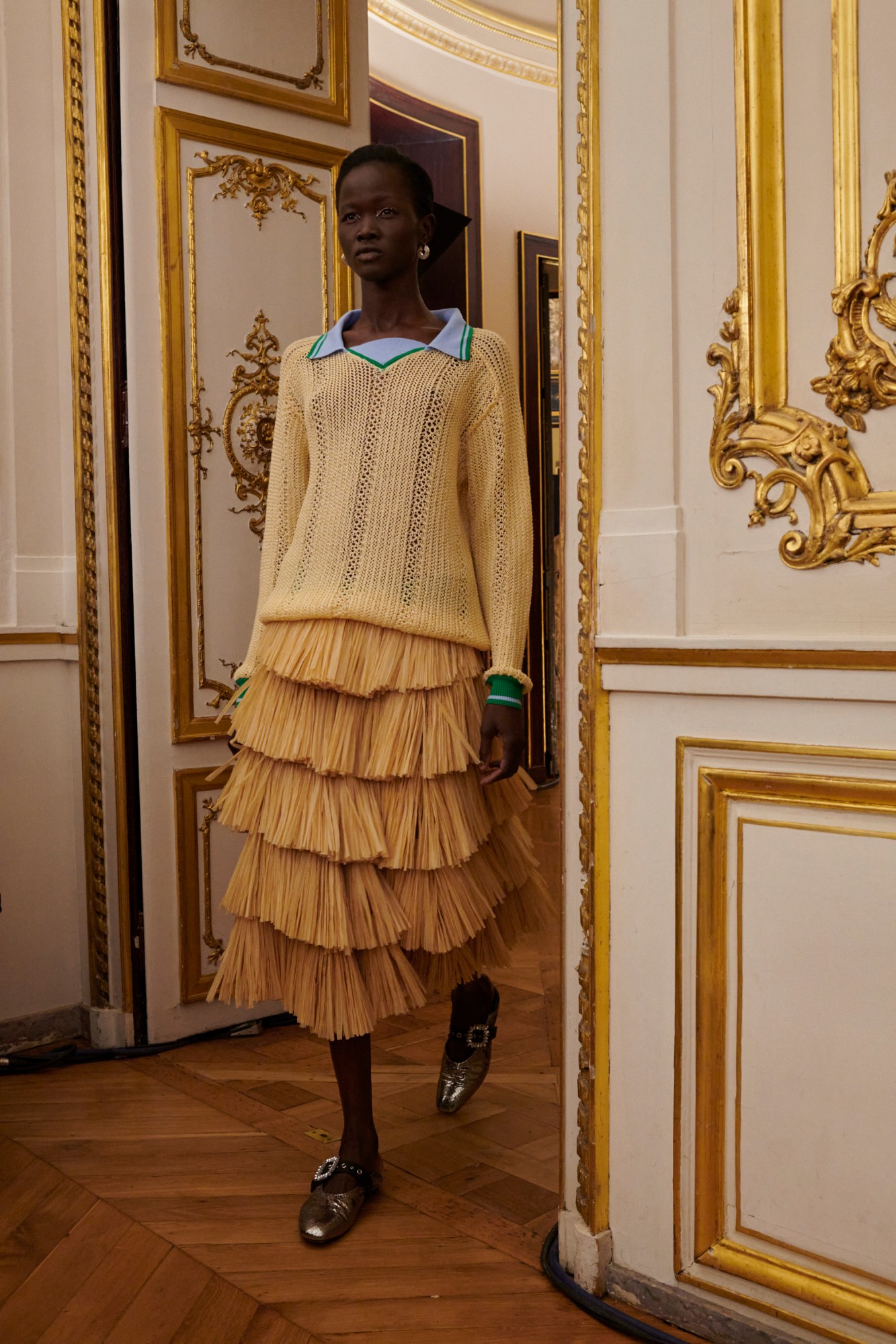
Wales Bonner
If Paris is luxury fashion’s undisputed capital, then Place Vendôme – the square flanked by the Ritz Hotel and the headquarters of the city’s most rechercé fine jewellery and couture houses – is its beating heart. It was here that, last night, Grace Wales Bonner opened Paris Fashion Week with her namesake label’s first physical show on the schedule. Granted, the feted British-Jamaican designer actually made the official hop during the pandemic, presenting a series of exquisite videos and lookbooks via the PFW online platform, but it was yesterday’s show that bore all the hallmarks of the triumphant debut that the label deserves.
Titled Twilight Reverie, this was a celebration of Grace’s spiritual forebears – writers, thinkers, artists – that also made their way to the City of Lights, and created some of the most defining work of their careers there – James Baldwin, Josephine Baker, Frantz Fanon, Aimé Césaire. Embodying a breezy spirit of flânerie – the oh-so-Parisian art of discovery through aimless wandering – models sauntered a stately enfilade of rooms, wearing louchely cut overcoats in zingy bouclé and cotton-candy cloqué; slim, elongated striped knit jumpers; belted sky-blue gabardine trenches; and ample ivory wool jackets embroidered with cowrie shells. It was all then shown to a custom soundtrack by none other than Sampha, Timothy Duval and Kendrick Lamar. Elsewhere, shirting and silk scarves were printed with a figurative work by renowned British painter Lubaina Himid, an ode to the figure of the Black flâneur.
The spirit of the wistful flâneur pacing the Seine gave way to the broody timbre of a smoky salon, with immaculate silk tuxedos created in collaboration with Savile Row tailor Anderson & Sheppard and tiered raffia skirts subtly nodded to the hazy nights of the heyday of Parisian cabaret, and spilled over into the couture-level extravagance of men’s skirts, crystal-embellished knits and lavishly draped shirting – nods to the Maharaja and Maharani of Indore. This flash of glitz was tempered by varsity style jackets and jumpers emblazoned with Sorbonne 56 – marking the First Congress of Black Artists and Writers that took place in that year at the noble French educational institution – as well as the latest chapter in Wales Bonner’s hotly-coveted Adidas collaboration, which, this season, featured a preview of an upcoming collaboration with Jamaica’s national football team. Looking at the collection in its ensemble, it’s clear that the collection’s title – Twilight Reverie – was an auspicious choice: last night in Paris, the stars really did align for Wales Bonner.
